The Crane Kick Is Bogus: A Karate Kid Oral History

At the end of a switchback road that winds through Sonoma Valley wine country, the wood varnish has worn from the spot where Robert Mark Kamen still practices karate on his vineyard porch each day. Now 66, the screenwriter took up martial arts after getting jumped by a gang of bullies at the 1964 World’s Fair in New York. In hindsight, it was a history-altering asskicking.
His earliest instructor was a truculent Marine captain who preached raw violence, which helped on the revenge front but which left Kamen desiring a deeper spiritual connection with the craft. He branched out and discovered Okinawan Gōjū-ryū, a defensive style designed to turn aggression on the aggressor with smooth blocks and sharp counterstrikes. Kamen trained four hours each day, seven days a week, under a teacher who spoke little English but who had learned directly from the founder of Okinawan Gōjū-ryū: a sensei named Chojun Miyagi.
Sound familiar? Three and a half decades after Kamen turned his life into a 109-page draft of a script, The Karate Kid waxes on. Released in June 1984, two weeks following the premier of Ghostbusters, the film endures through an endless list of quotable catchphrases: “sand the floor. . . paint the fence. . . sweep the leg.” It inspired generations to stand up against schoolyard tormentors (pity those who did so with a crane kick), introduced a mainstream audience to the heroism of the all-Japanese 442nd Infantry Regiment from World War II, and lives on through an upcoming web series, Cobra Kai. The film’s $90 million domestic gross helped Kamen build his beloved vineyard, where he’s sitting on this sun-splashed afternoon, fielding a call from the manager of a local cinema who wants him to appear at an upcoming Karate Kid tribute night.
“I’ll wear my Mr. Miyagi T-shirt,” Kamen replies. “Or I can wear my WAX ON, F--- OFF T-shirt.”
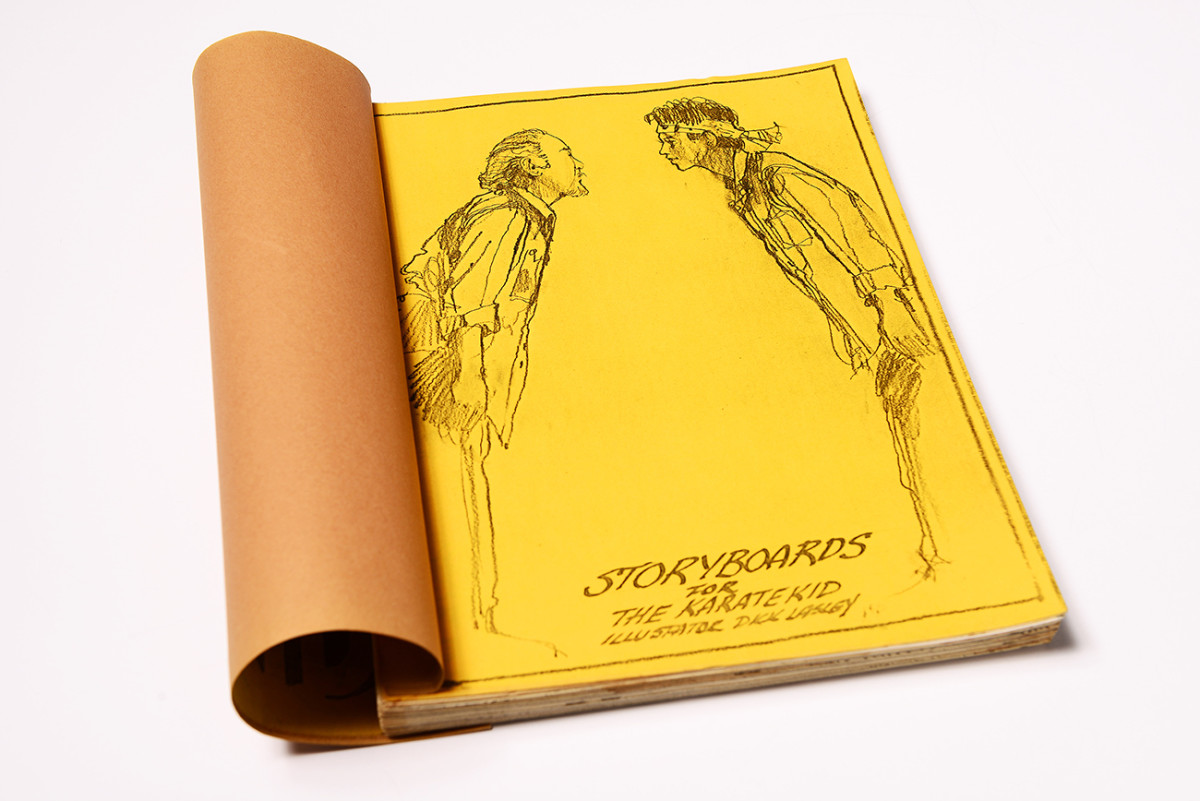
Many of the production’s principal figures have passed away, including producer Jerry Weintraub, director John Avildsen and Pat Morita, whose turn as Miyagi earned an Oscar nomination for best supporting actor, a first in that category for an Asian-American. But nearly three dozen other members of the cast and crew spoke with SPORTS ILLUSTRATED about the making of The Karate Kid, reliving a whopping hit that, like Daniel LaRusso’s performance in the final round of the All-Valley Under-18 Karate Championships, no one saw coming.
“Just a little movie that no one was going to give a s--- about.”
ROBERT MARK KAMEN (writer): I was mentored in the film business by a man named Frank Price, who was the chairman of Columbia Pictures at the time. Frank called me up and said [producer] Jerry Weintraub had optioned an article about a nine-year-old kid who earned a black belt.
SUSAN EKINS (production coordinator): Jerry used to watch the news all the time. There was this little blurb about a kid who kept getting beat up by bullies on his block. His mother was a single parent and he asked to go to karate school. And he got a mentor, like Mr. Miyagi, who took him under his wing.
KAMEN: Jerry asked if I had a story to wrap around this. I came out to L.A. and told him about me and my own teacher. My life informed it.
EKINS: Robert wrote a brilliant script.
RALPH MACCHIO (actor, Daniel LaRusso): I found it a little corny. Maybe a little overly saccharine, sweet.
CLIFFORD COLEMAN (first assistant director): I thought it was a piece of s---.
MARTIN KOVE (actor, Cobra Kai Sensei John Kreese): All of us used to complain about the title.
R.J. LOUIS (executive producer): What is it, a drive-in theater movie?
YUKI MORITA (Pat Morita’s wife at the time): A schmucky, quickly-put-together production. A kids show, maybe. It seemed so simplistic.
MACCHIO: I fought tooth and nail to change this goofy title, only because I knew there was a chance I had to carry it for the rest of my life.
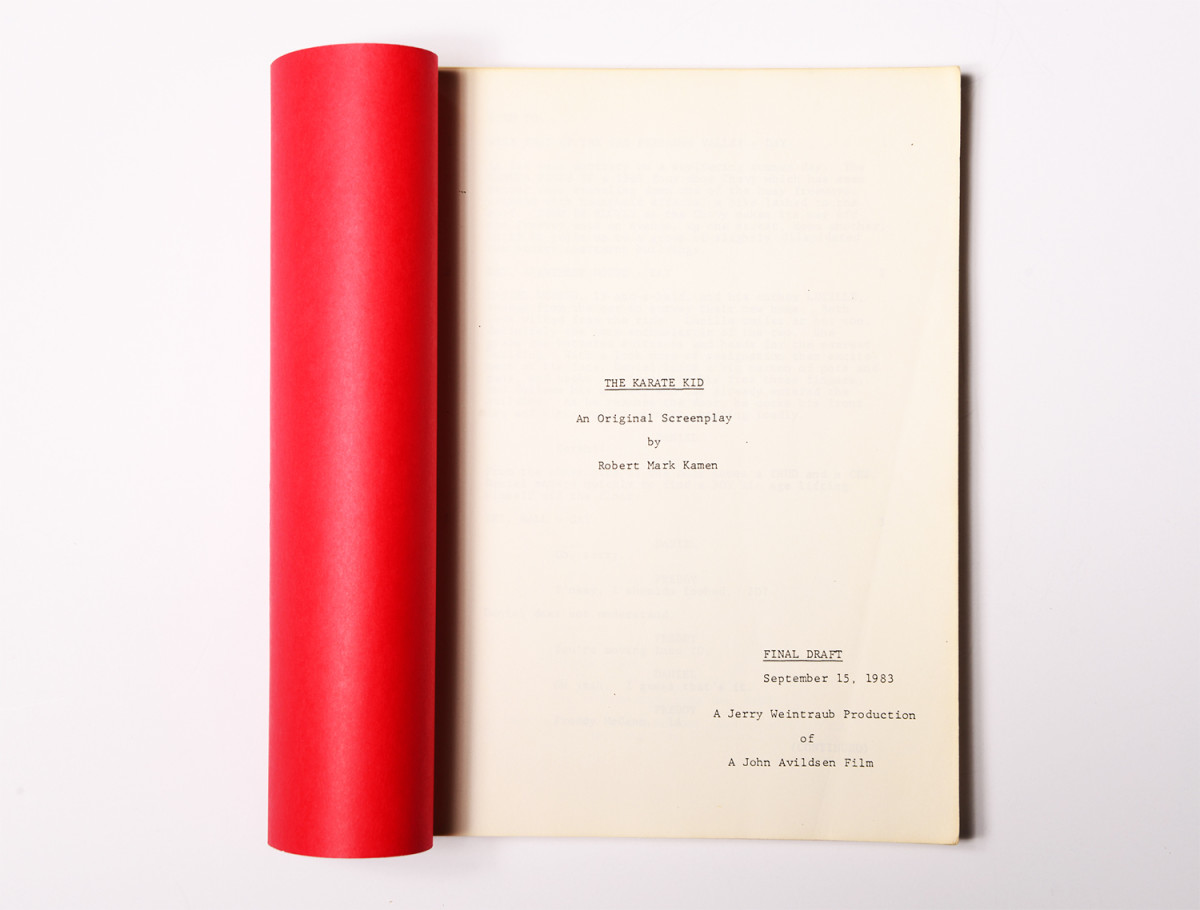
DARRYL VIDAL (Morita’s stunt double): And with the shadow of Rocky—knowing that [Karate Kid director] John Avildsen had directed that too—it was like it was The Rocky Kid.
KAMEN: Sylvester Stallone and I joke about that all the time. He says: “You just f------ ripped off my movie.” I’ve got an Italian kid, an old man. . . yeah, you know what, you’re absolutely right. You had one good idea and I ripped it off!
EKINS: It wasn’t a big budget. Like $8 million.
RON THOMAS (actor, Cobra Kai’s Bobby): My manager told me: “This movie has no audience. It’s not going anywhere.”
BUD SMITH (editor): We started like it was just a little movie that no one was going to give a s--- about.
ROB GARRISON (actor, Cobra Kai’s Tommy): Later, during filming, we were all laughing, the whole cast and crew. John stopped us. He goes, “You guys have no idea what you’re making here. This is going to be a classic.” We all thought, Yeah, whatever.
“Perfect. We have a kid that knows nothing.”
KAMEN: The casting was magic.
THOMAS: It was Jerry Weintraub’s idea to hire the sons and daughters of famous people [for some supporting roles].
RANDY SABUSAWA (assistant to Avildsen): We had [Steve McQueen’s son] Chad McQueen, Frankie Avalon Jr., John Travolta’s nephew. Ricky Nelson’s daughter played one of [Elisabeth Shue’s] friends until she fell out.
BONNIE TIMMERMANN (casting director): I brought Ralph in [for the title role] because I remembered the work he did with Francis Coppola in The Outsiders.
ELISABETH SHUE (actress, Daniel’s girlfriend Ali Mills): Ralph was a big star compared to the rest of us. We were all like: Woah, he has a manager.
KAMEN: John called me up [to his apartment on 89th Street in Manhattan] and said he was bringing someone over. I open the door and there’s Ralph: no musculature, a skinny little string bean of a kid. He wasn’t particularly coordinated for martial arts. I showed him some simple blocking and punching moves and he couldn’t do them at all. I said: “That’s perfect. We have a kid that knows nothing.” I wanted a wimp. And Ralph is the paradigmatic wimp.
RANDEE HELLER (actress, Daniel’s mother Lucille LaRusso): I auditioned and I got a callback. Then I read with Ralph. I walked out of there and I go: “Wow, he’s such a mature person for 16 years old!”
MACCHIO: I was 21. The Macchio family curve means that you take off six years [from your age] and that’s how old you look.
HELLER: His hormones never kicked in. They still haven’t kicked in.
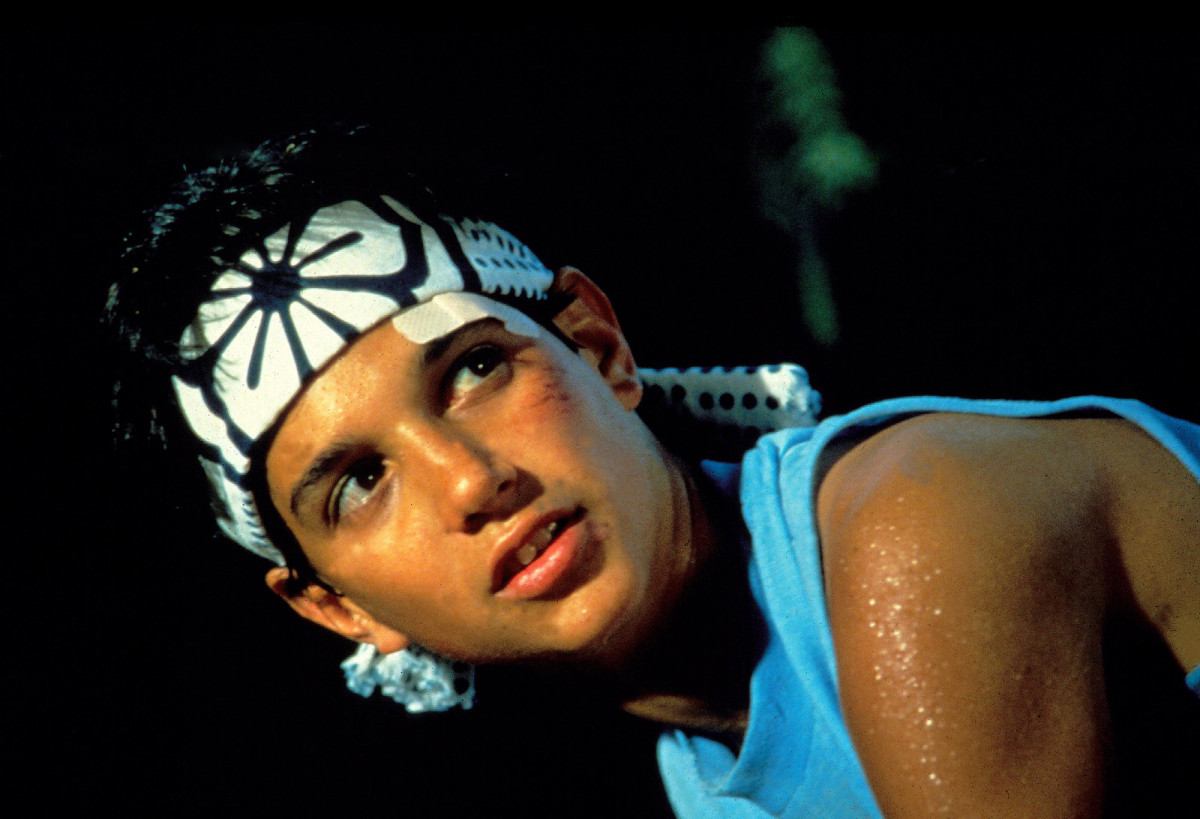
MACCHIO: The character was originally named Danny Weber. As soon as I walked in the room, it changed to LaRusso.
SABUSAWA: Jerry was of the mind: Let’s get the most famous Japanese actor on the planet for Mr. Miyagi. Let’s go for the grand slam.
MACCHIO: I envisioned one of the Seven Samurai playing Mr. Miyagi, because that’s how it was written.
EKINS: They brought in Toshiro Mifune [who’d starred in Akira Kurosawa’s Rashomon, Seven Samurai and The Hidden Fortress], but he didn’t speak a word of English.
SABUSAWA: Pat was an unusual choice.
VIDAL: Everyone thought of him as Arnold [the owner of Arnold’s Drive-In] from Happy Days.
COLEMAN: Nobody wanted Pat Morita; he had a horrible background. He was the type of stand-up comic who got up on stage loaded, dirty and foul. He was not Pat Morita the sensei.
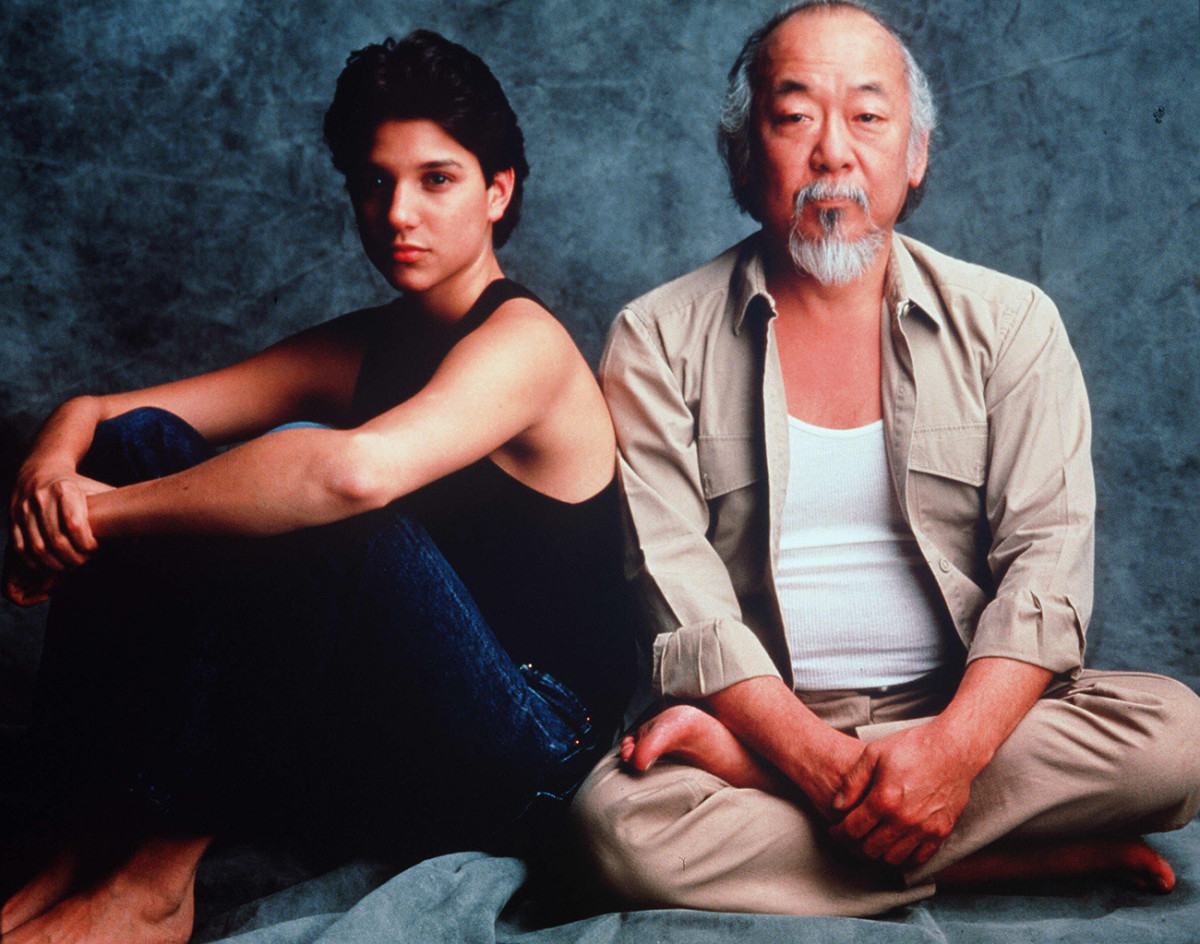
EKINS: Jerry goes, “Are you kidding? I used to [work in stand-up] with Pat Morita in the Catskills. He was called the Hip Nip (employing a slur that abbreviates Nippon). He used to wear his eyeglasses upside down. How can you even think the Hip Nip is good for this movie?”
YUKI MORITA: Our family had gone through quite a bit around that time. We’d lost a home in a mudslide. My mother died. My youngest daughter was ill. Pat wasn’t working that successfully as a comic. Culturally, Asian-Americans weren’t considered very relevant back then. It was tokenism at the time. They all had to grapple with the same jobs in Hollywood.
ALY MORITA (Pat Morita’s daughter): My dad had come from playing these ching-chong-Chinaman roles. That gets tiring and demeaning and draining. Here was a character who had a past, a history, and there was this wonderful relationship between him and Daniel.
KAMEN: John insisted on Pat. He put him on tape.
EKINS: It almost brought Jerry to tears. He said, “That is Mr. Miyagi.”
SABUSAWA: Lisa Shue had just done a Burger King commercial.
SHUE: This was my first film. I’d been to Wellesley for two years, and I left to do a pilot for ABC called Call to Glory [with Craig T. Nelson]. I auditioned for The Karate Kid after that.
TIMMERMANN: Elisabeth was so beautiful and fresh-faced. She was one of the most intelligent young actresses I had met in a long time.
WILLIAM ZABKA (actor, Cobra Kai’s Johnny): Robert Downey Jr. was considered for Ralph’s part. And Charlie Sheen. I know they had some known names in that category. (Other notable considerations: Emilio Estevez, Nicolas Cage, Anthony Edwards [deemed "too tall"] and Eric Stoltz ["not enough dynamics"] for the Daniel role; Crispin Glover for Johnny; Helen Hunt and Demi Moore for Ali; Sarah Jessica Parker for one of Ali’s friends; and Valerie Harper for Lucille LaRusso.) I think they were looking for an unknown for Johnny.
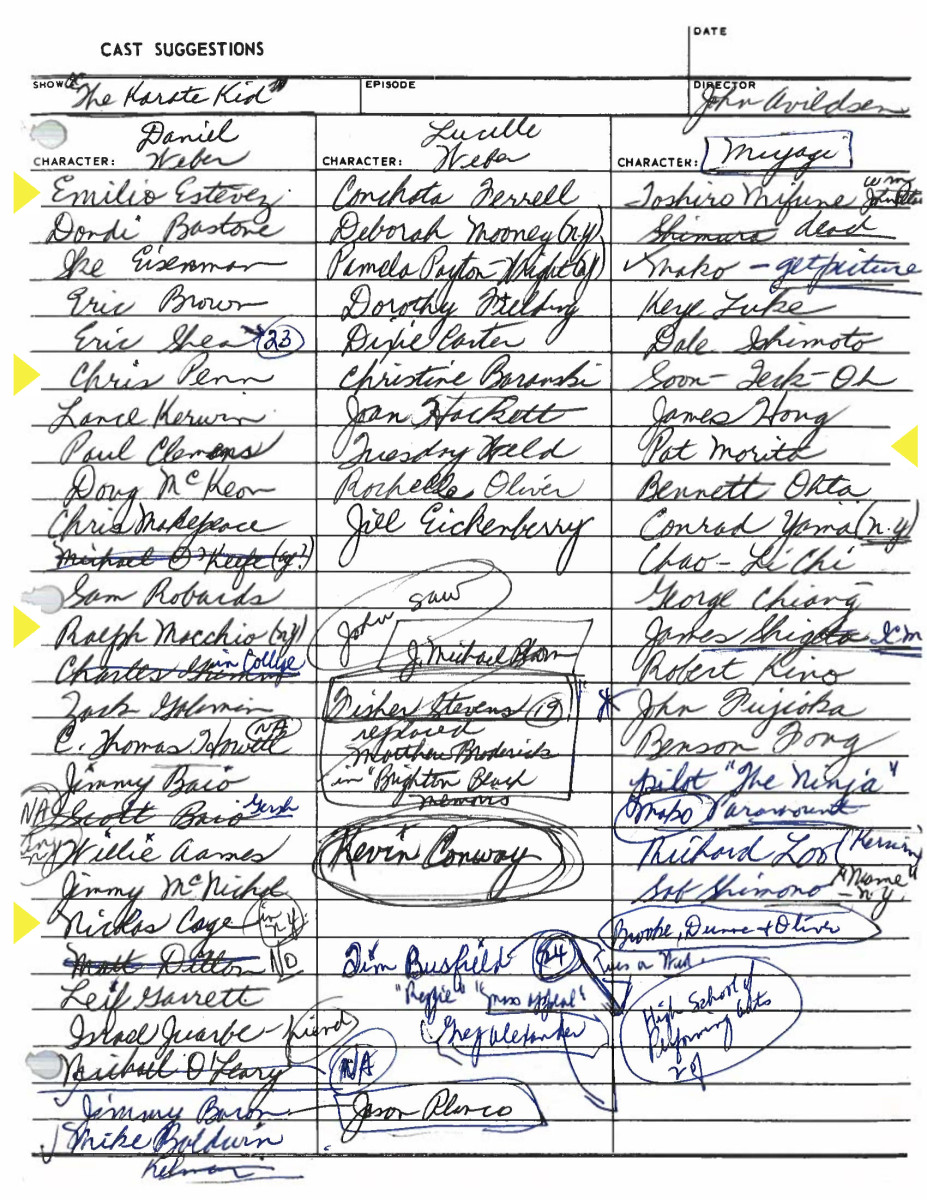
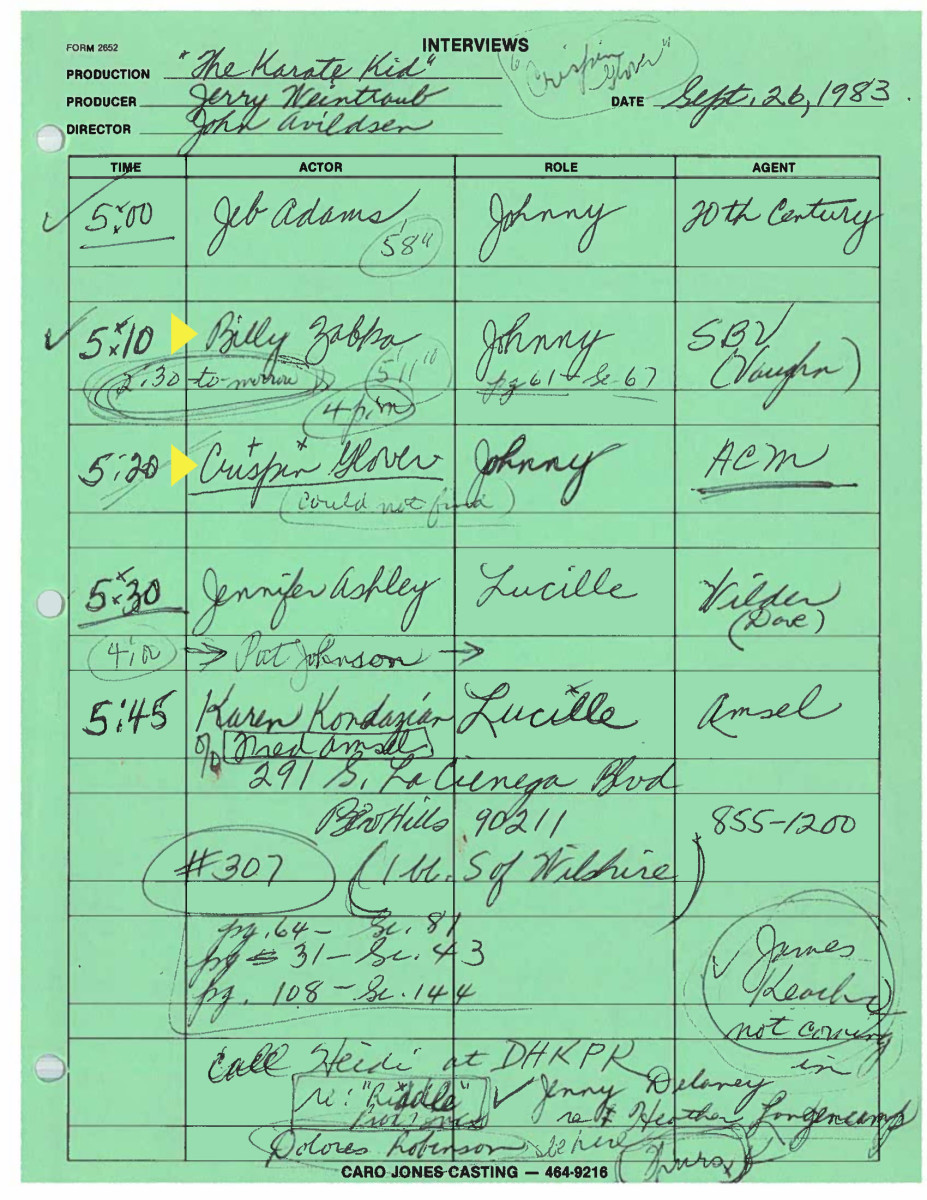
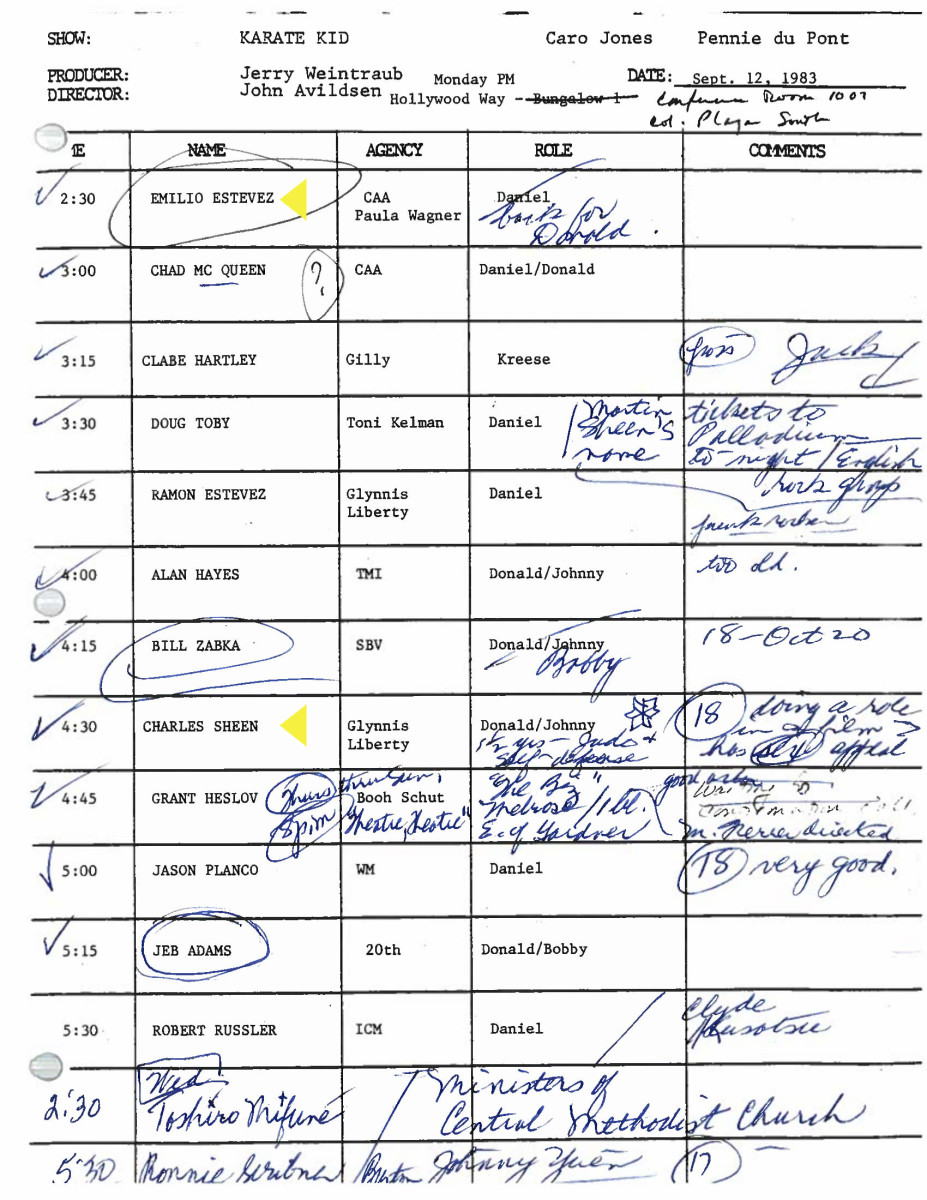
[From left to right: Casting sheets show Emilio Estevez and Nicolas Cage were considered for the role of Daniel and in addition to Zabka, Crispin Glover was also looked at for the role of Johnny. Charlie Sheen was considered on a casting sheet for Donald and Johnny. From the Caro Jones papers of the Margaret Herrick Library, Academy of Motion Picture Arts and Sciences]
KAMEN: The Cobra Kai were just a bunch of generic kids taken out of a box of generic kids. Billy was the standout. He was very athletic. You’d show him [some karate moves] and he’d just do it.
ZABKA: My audition was at the Columbia Pictures lot. The role was this gang leader—tough karate guy—and so it wasn’t a friendly environment [among the other actors trying out]. I didn’t want to sit in the waiting room, so I went in my dad’s 1970 red Volvo station wagon and cranked some Zebra until they called me in. A week later, I read with Ralph. Afterward, I hid around the corner outside until it was almost dusk. When Ralph came out I said, “Hey, how’d it go?” He goes, “Everybody was really good. I told them you scared the s--- out of me.”
SABUSAWA: The Cobra Kai was supposed to be this white-blonde dojo.
CHAD MCQUEEN (actor, Cobra Kai’s Dutch): John wanted that whole Aryan look. Once a week I’d have to get my hair dyed platinum f------ orange. In hindsight it was a good thing, so I didn’t get [recognized and get] my ass kicked when the movie came out.
SABUSAWA: Part of this movie was Robert pointing out that martial arts, in its essence, is based on love. That’s what Miyagi was teaching. The Cobra Kai attitude was a stark contrast to that.
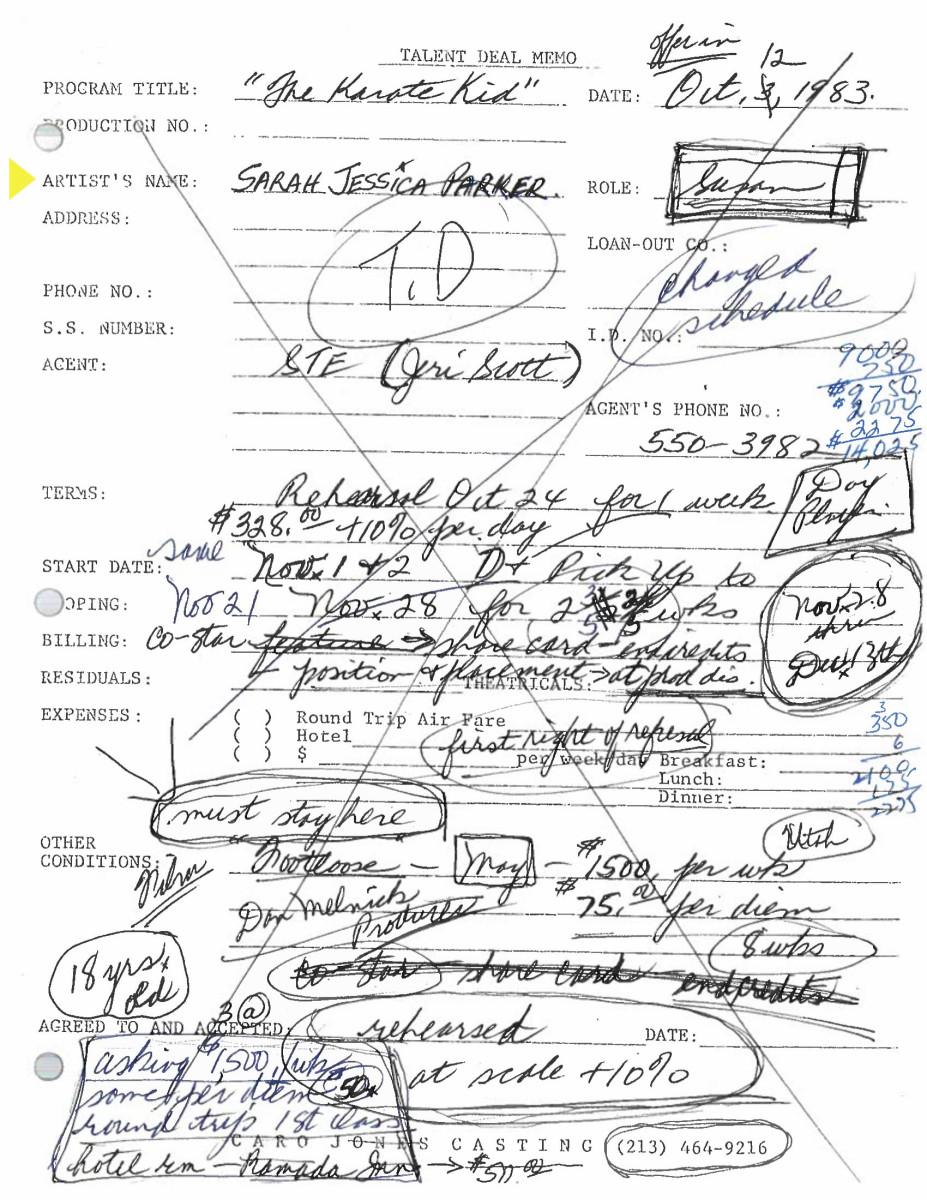
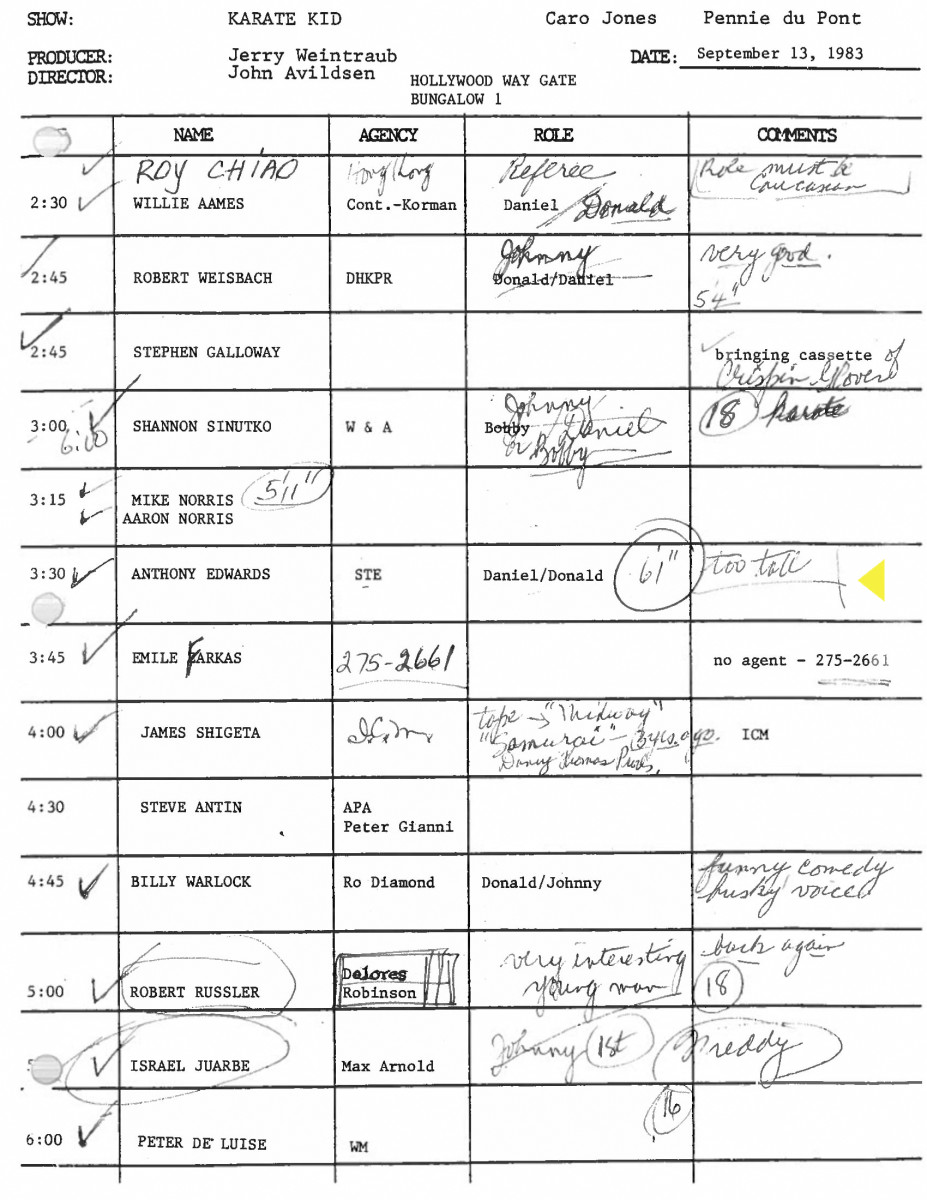
[From left to right: A contract was created for Sarah Jessica Parker to play the role of one of Ali's friends, with terms set at $328 per day plus 10% per day, for one week of rehearsals. Anthony Edwards was deemed "too tall" to play Daniel. ]
THOMAS: The first time we read the script together, we were all shuttled up to Jerry Weintraub’s gated mansion in the Hollywood Hills. That was surreal.
GARRISON: His living room was the size of a basketball court. We all sat in these beautiful couches and chairs.
ISRAEL JUARBE (actor, Daniel’s friend Freddy Fernandez): You’ve got the director from Rocky and this guy with a big-ass mansion. I’m thinking: Wow, dreams do come true, man.
“A little fraternity, a clique. . . . We were the Cobra Kai snake, all one piece.”
THOMAS: John was an editor before he was a director. He was very methodical.
WILLIAM MATTHEWS (set designer): He had everything marked out in a gym to rehearse. All the props, all the furniture had to be there.
LOUIS: He would videotape the rehearsals, almost like he was shooting the movie before the movie was shot.
GARRISON: Those rehearsals are where the Cobra Kai bonded.
TONY O’DELL (actor, Cobra Kai’s Jimmy): It was like summer camp. Go to dinner, fool around, listen to music. . . . I remember hanging out in a parking lot and playing a Lionel Richie album that had just come out.
THOMAS: [For a soccer scene in gym class] we had some guy come in who used to play with Pelé. He taught us how to dribble.
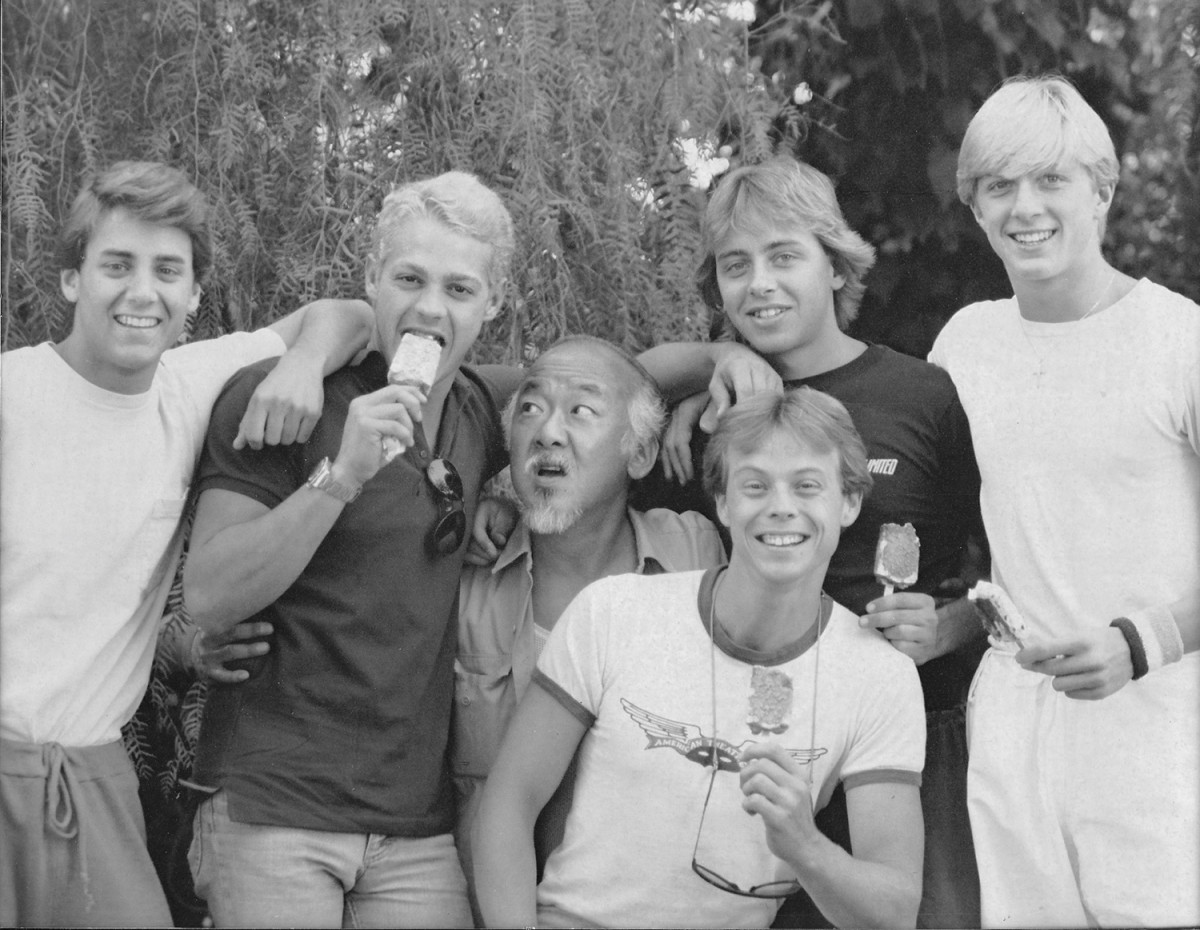
PAT ROMANO (Macchio’s stunt double): We had a few days of motorcycle training [for a scene in which the Cobra Kai chase Daniel on dirt bikes]. We’d just go out into to a field or into a parking lot and teach them.
THOMAS: John decided we still couldn’t ride good enough, so he took a whole Sunday—which back then was considered golden time; we got paid triple—to go to the Columbia Studios ranch area. Picture five guys on 350 Hondas, the studio’s closed, we’re there alone, driving up on these old wooden sidewalks for the western sets and riding into the saloons, spinning donuts on the Fantasy Island set. . . .
GARRISON: . . . down by the old Leave it to Beaver house, the streets they later used in Desperate Housewives. I was scared to death, but I figured: If they were doing it, I would too.
ZABKA: I would call it a little fraternity, a clique. It was like going to college and having your first new batch of buddies. We were the Cobra Kai snake, all one piece. It was by design that John Avildsen separated us from Ralph.
GARRISON: His trailer wasn’t even near ours. You’d wonder: Why is John doing this? But onscreen it brought out a real-life quality. Not being able to hang around Ralph, it was a lot easier picking on him in the movie than it would have been if we were buddies.
MCQUEEN: I never really talked to Ralph. If I did, I’d say something nasty.
LOUIS: We brought in Pat Johnson to do a lot of the karate training and bodybuilding.
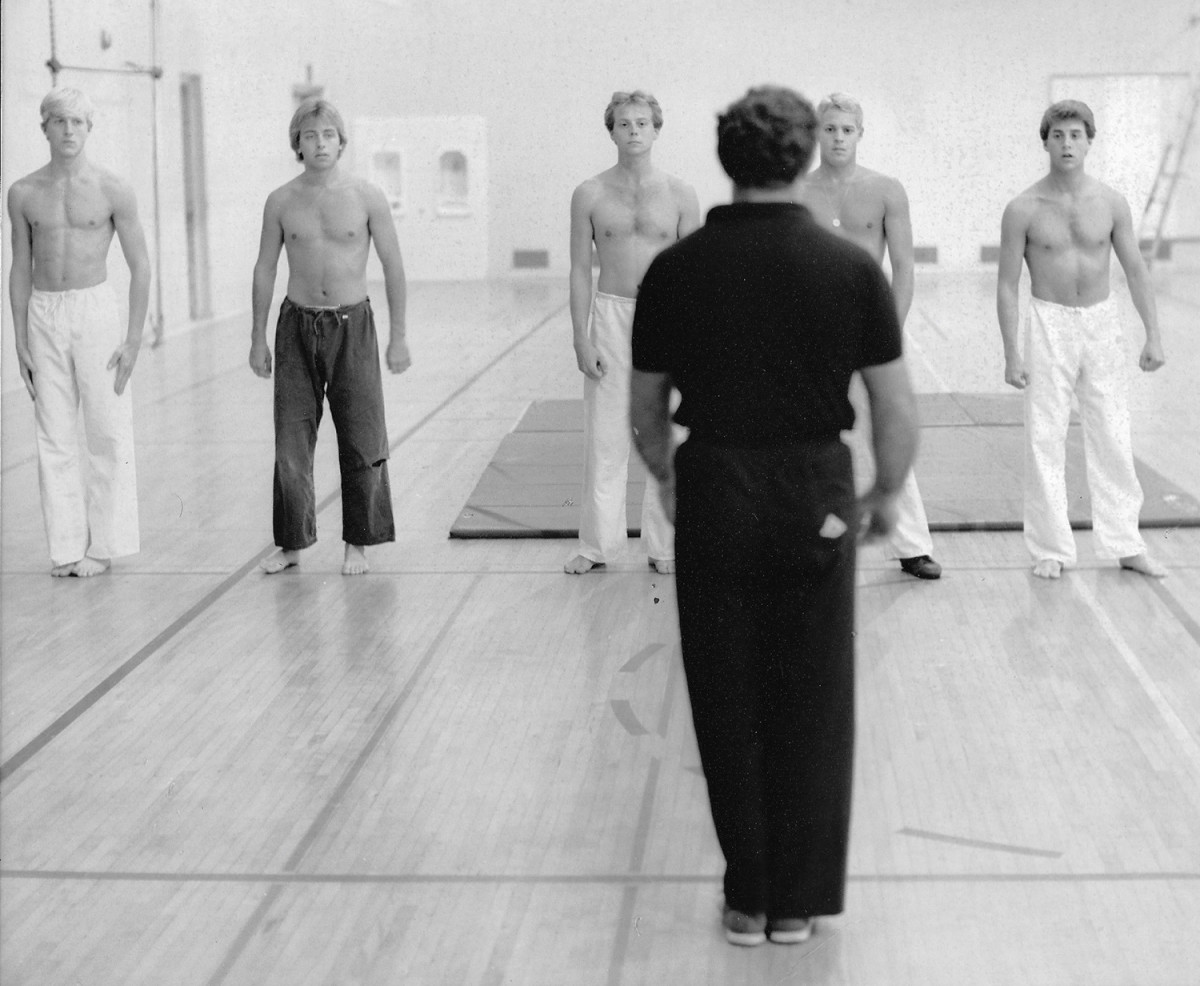
PAT JOHNSON (martial arts choreographer; actor, tournament referee): I’d been in martial arts since 1963. I was sent to Korea with the U.S. Army and I learned Tang Soo Do, a Korean form of karate. When I came back to the States, I went to tournaments and met Chuck Norris. You’ve probably heard of him. I trained with Chuck and eventually became the captain of his undefeated fighting team.
KOVE: Pat is the softest man in the world. But he’s a major killer.
MCQUEEN: He’s a hardass motherf-----.
ZABKA: We worked five days a week, four hours a day for the month before we shot. Then every day after that. They’d just roll out gymnastics mats on the set.
THOMAS: He had to bypass a lot of stuff to get us film-ready within six or seven weeks. We were just hitting pads, doing basic stuff.
VIDAL: They didn’t have any real sparring instruction; they were just doing punches and kicks and combination strikes.
O’DELL: Some of us were just learning. And some of us. . . .
THOMAS: I was a second-degree black belt in jujitsu. My agent told me not to say anything about my experience, that they were only hiring actors and they were going to train you anyway—so shut up. Six weeks into training, Pat comes up to me and goes, “You know something, don’t you?” I had to spill the beans.
KOVE: I got the attitude for my character from Pat. I used his kiais. I used the way he stood with his hands in his belt. I became the Darth Vader of the karate world. (Other actors whose names were floated for Kove’s role: Kurt Russell, Jeff Bridges, Harvey Keitel, Leonard Nimoy and Christopher Walken.)
JOHNSON: I trained [Kove] as if he were my equal. He just stood in the background when I was teaching the Cobra Kai kids; he’d watch me pound them into the ground. “You guys are worthless! Get down and do 50 pushups, you punk!”
ZABKA: If I was doing something sloppy, Pat would grab me and twist my leg. If I ever turned my back on him, he’d sweep me to the ground and say, “Never turn your back on anybody!”
JOHNSON: I trained Pat and Ralph separately, really hard. They would moan and bitch—they developed a relationship because they had that in common.
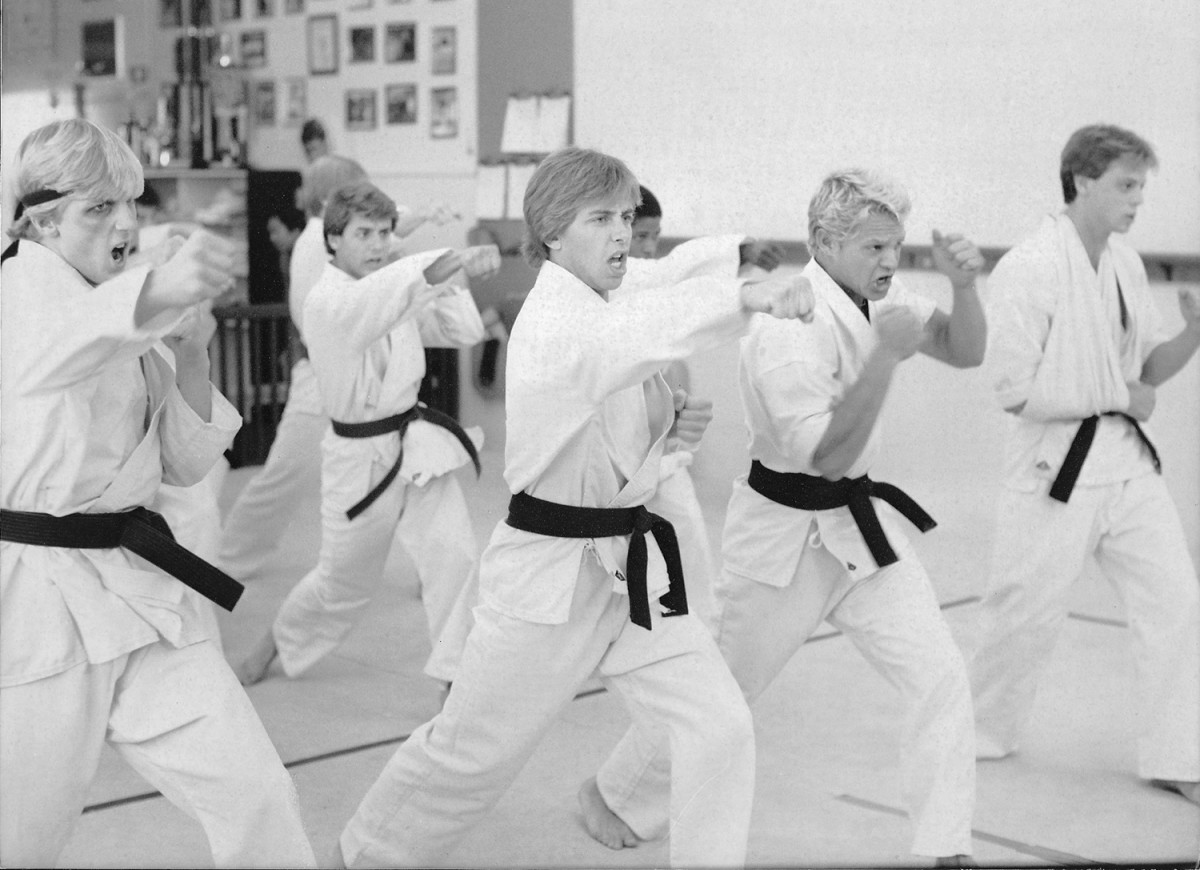
KAMEN: Neither of those guys knew s--- about karate. You don’t see Daniel throwing any flying wheel kicks or any of that stuff. You see him being defensive, deflecting strikes. That’s as far as I could get with him.
MATTHEWS: We all wondered if Ralph could do it because he looked so frail.
MACCHIO: Good thing the other person I trained with was Pat Morita, so I always looked good.
SHUE: I remember being incredibly jealous that Ralph got to learn karate and I didn’t. I made fun of him a little bit, like: I could kick your ass.
“We had a fly wrangler. . . He tried putting these flies in a refrigerator to slow them down.”
MACCHIO: We started shooting on Oct. 31, 1983, at Leo Carrillo beach in Malibu: the scene where the Cobra Kai are coming down on motorcycles. That was a couple days of getting sand in my face and getting my butt kicked.
DANA ANDERSEN (actress, Ali’s friend Barbara): It was freezing. I remember thinking: I don’t want to be doing this; I want to be out partying for Halloween.
SABUSAWA: Jerry called in a favor from the governor at the time (George Deukmejian), because they didn’t usually allow shooting at that beach.
SHUE: I remember having to wear a bathing suit for that scene, which was a big deal because I felt so uncomfortable. When we first started filming, I was given a trainer (Jake Steinfeld, of Body by Jake fame) and asked to stay in shape. Once the beach scene was shot, I went back to eating whatever I wanted. Watch, I slowly gain weight throughout the rest of the movie.
EKINS: We used all real locations around Los Angeles. There was the absolute biggest dive apartment building, in Reseda. It was a craphole. We drained the pool and made the water green.
MACCHIO: The South Seas. That place still looks the same. It’s just missing one palm tree now—two instead of three.
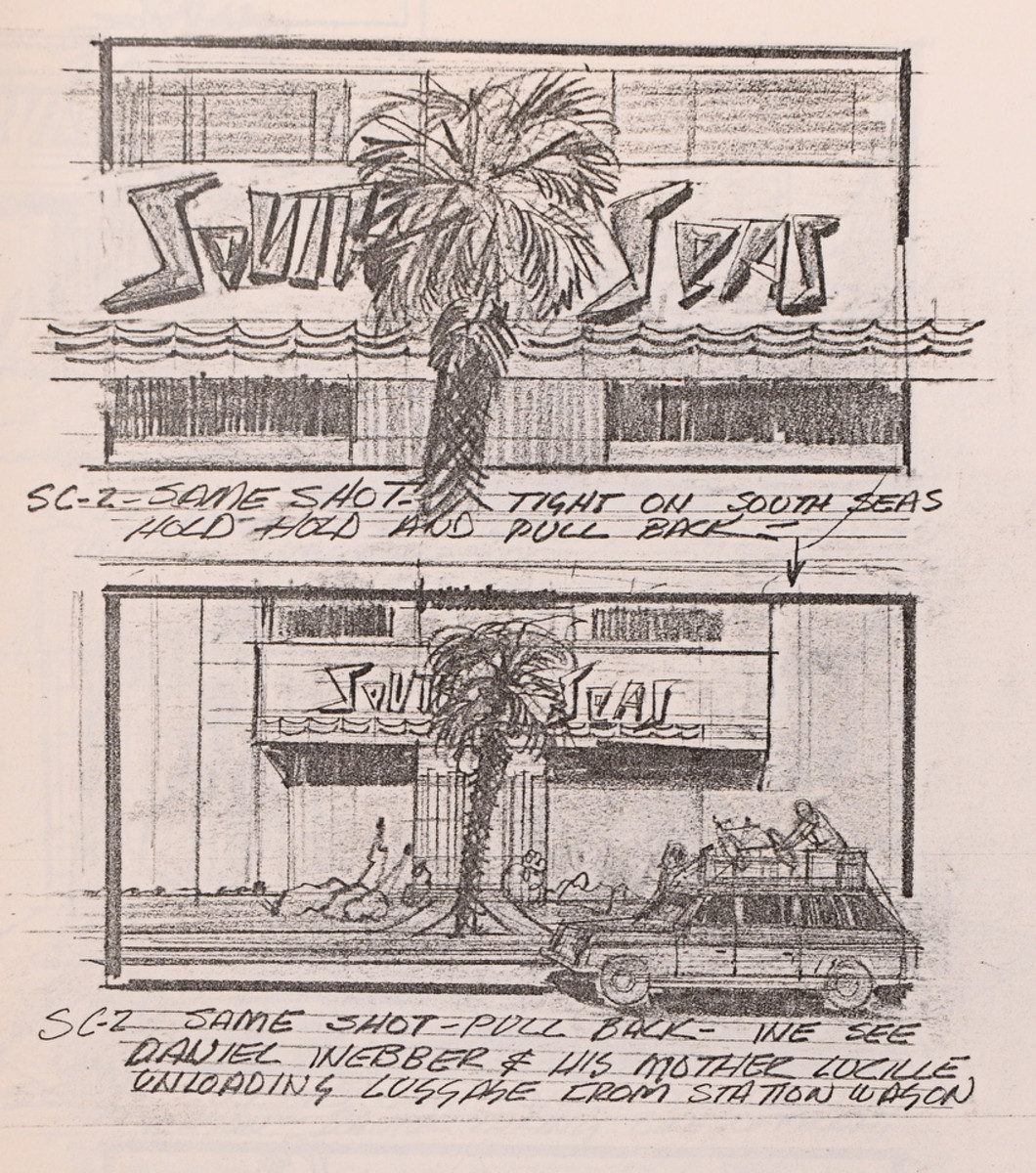
PETER CHOI (trainee assistant director): That movie uncovers this whole other part of L.A. that hadn’t been seen much on film and TV. It wasn’t the usual Beverly Hills. I think that’s why people really related to Ralph’s character, why the movie seems so authentic.
SHUE: We filmed at an arcade in Norwalk for two days, played Foosball and bubble hockey and rode Go Karts. . . .
CHOI: The Cobra Kai dojo was in North Hollywood. Mr. Miyagi’s house was in Canoga Park. I remember shooting the catching-a-fly-with-chopsticks scene there, which did not take as long as one would think.
EKINS: We had a fly wrangler.
LOUIS: He tried putting these flies in a refrigerator to slow them down. But as they warmed up, they’d get faster. It wasn’t working.
MACCHIO: We built a pipe frame, with a piece of wire hanging from it with a little fly on the end; he’d be on the side making this dead fly move.
LOUIS: That wasn’t working. So I got a six-foot pole and some thin black thread. The script supervisor [Alvin Greenman] was wearing a black fuzzy sweater; I took piece of fuzz off it and the prop guy tied it to the end of the thread. You didn’t have a lot of CGI 35 years ago.
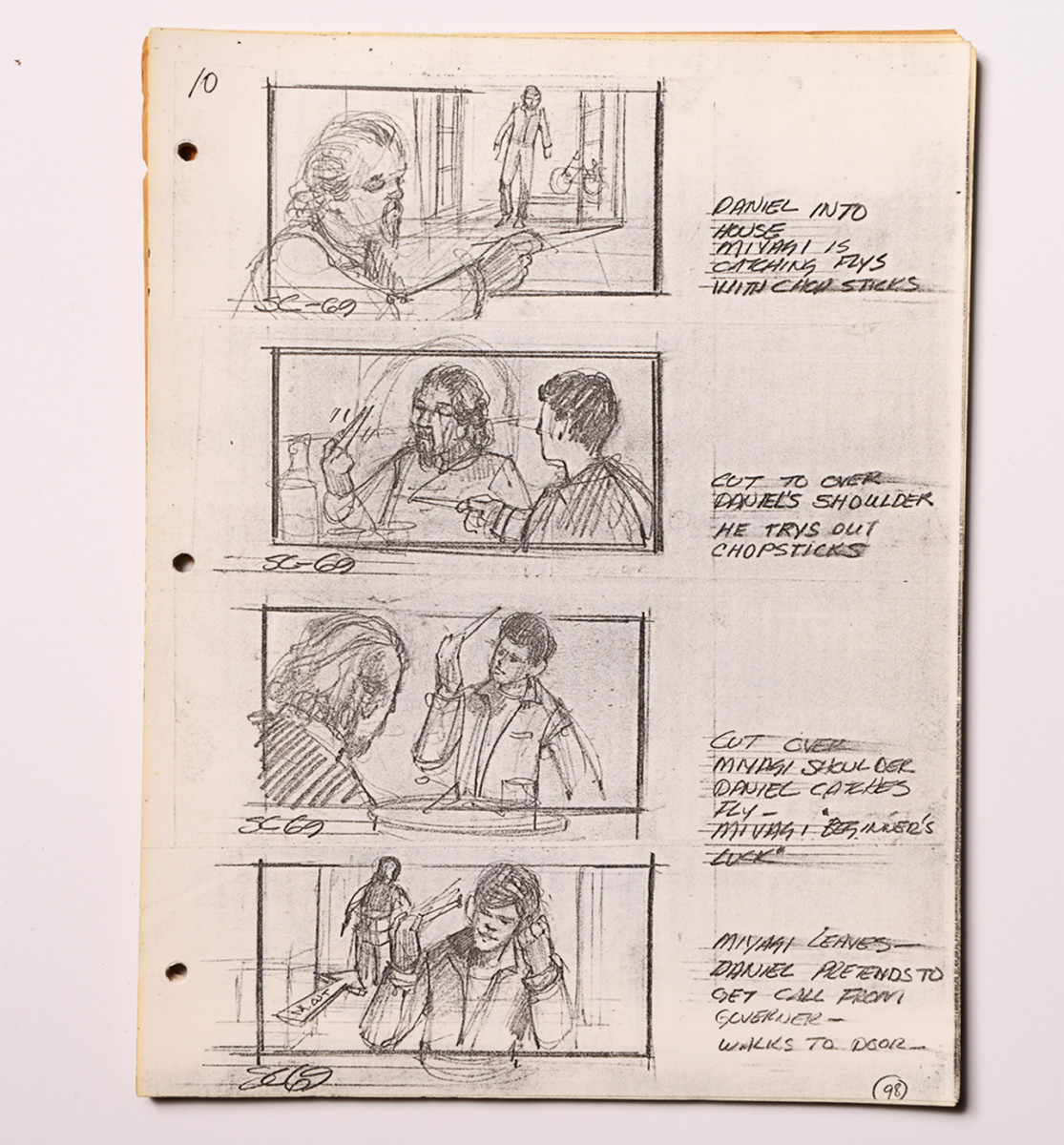
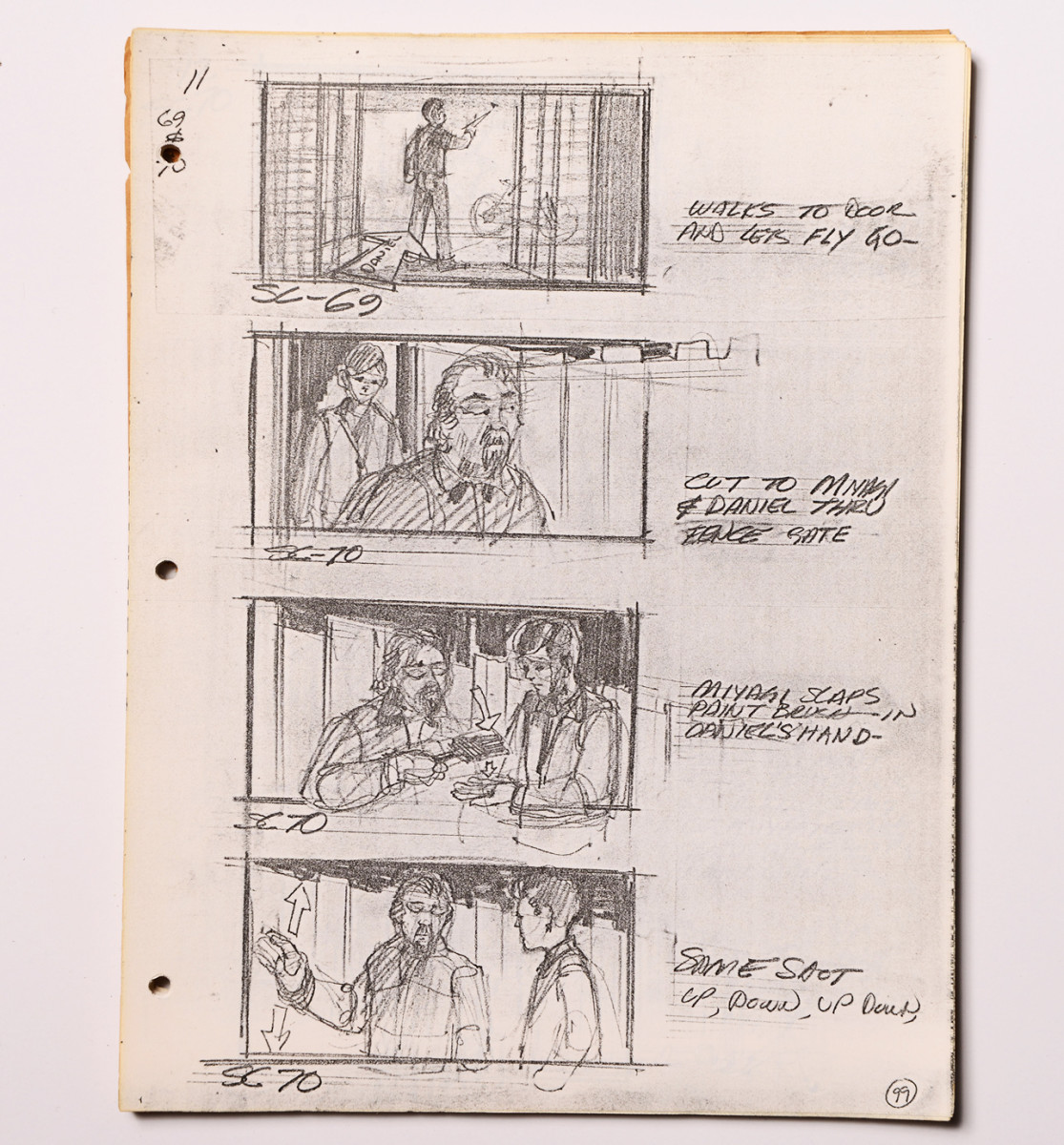
[Storyboard: The "catching-a-fly-with-chopsticks" scene.]
MACCHIO: [For another scene] they spent money creating this thing called Mr. Hashimoto.
KAMEN: It was supposed to be a training dummy that Mr. Miyagi had made out of a broom. Ralph was supposed to bow to it, then it would hit him.
EKINS: Mr. Hashimoto would turn and his hands would wiggle around. He was on a stick, but he had some legs.
MACCHIO: Inside was this hydraulic unit that never worked. [Hashimoto] made an appearance in the third movie, and it still never worked. It was too slow and it looked as corny as it sounds.
LOUIS: So Hashimoto turned into Pat Morita putting on a catcher’s mask and vest as Ralph Macchio went to work on him at sunset. It was a nice moment for their relationship. You can’t do that using a dummy with hydraulics.
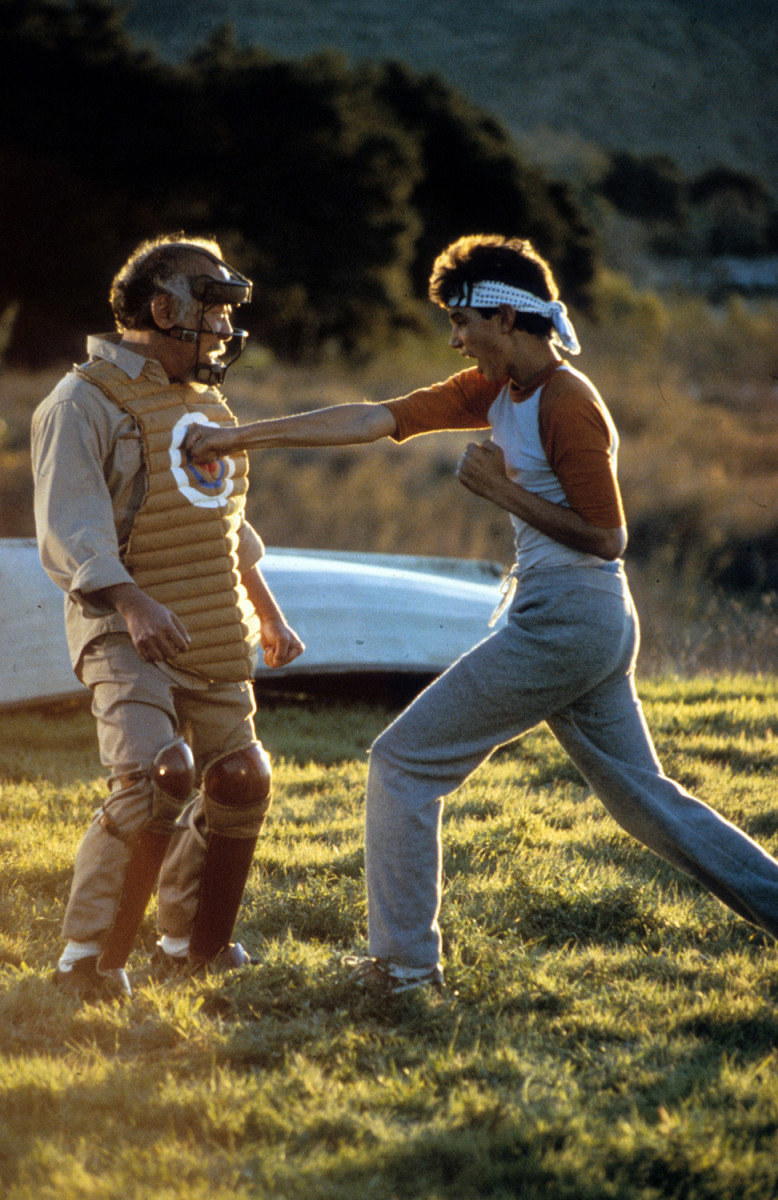
“Steven Seagal used to tag a lot of his stunt guys. It happens.”
LOUIS: The scene with the Halloween party was terrific, trying to come up with all these unique costumes.
ANDERSEN: I was a cigarette girl, in like a bunny outfit. They could never do that today.
ALY MORITA: Poor Ralph had to stand around wearing this jimmied shower curtain thing. (Daniel dresses as a working shower.)
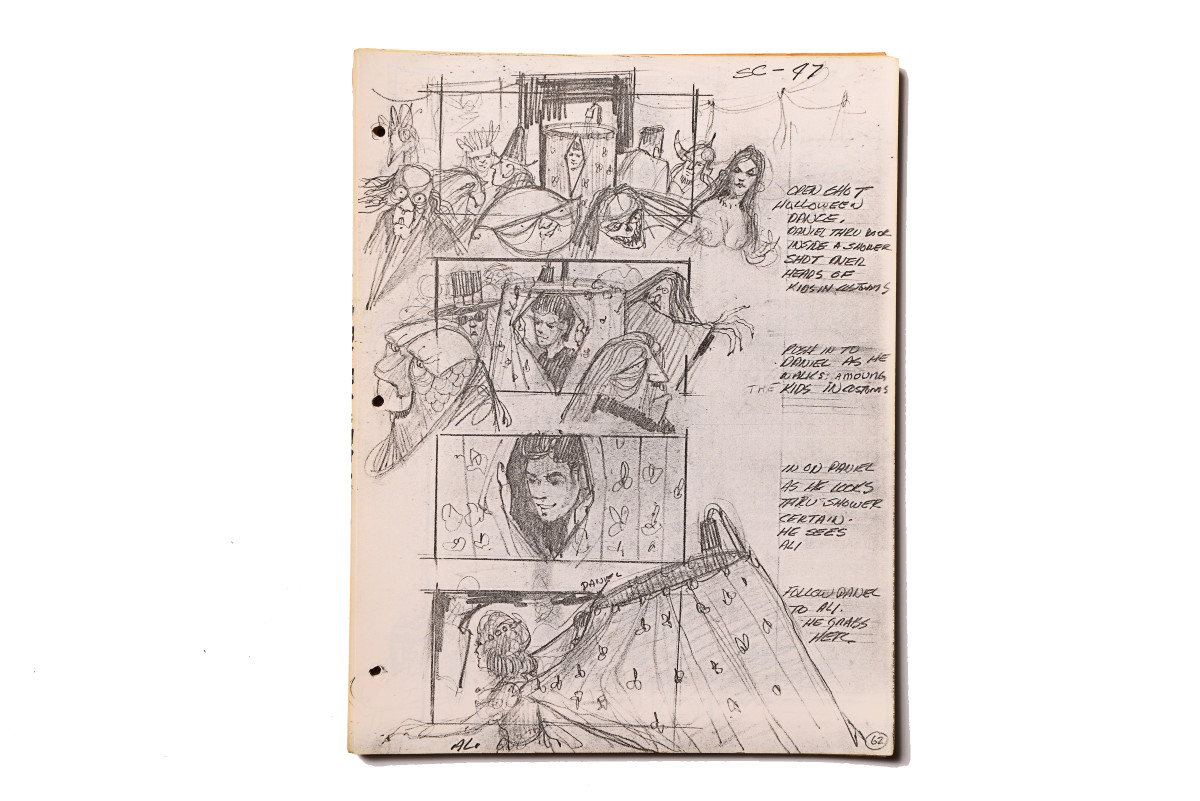
MACCHIO: It was heavy. I don’t know if it was actual brass, but it felt like it.
MATTHEWS: I had to design the skeletons.
O’DELL: Those outfits were absolutely skintight.
THOMAS: Chad McQueen, he’s a great guy. But he’s not too far off from his character, Dutch—a little crazy, a wild child.
MCQUEEN: I took a rolled-up sock and stuffed it down the costume as a codpiece. I looked like f------ John Holmes.
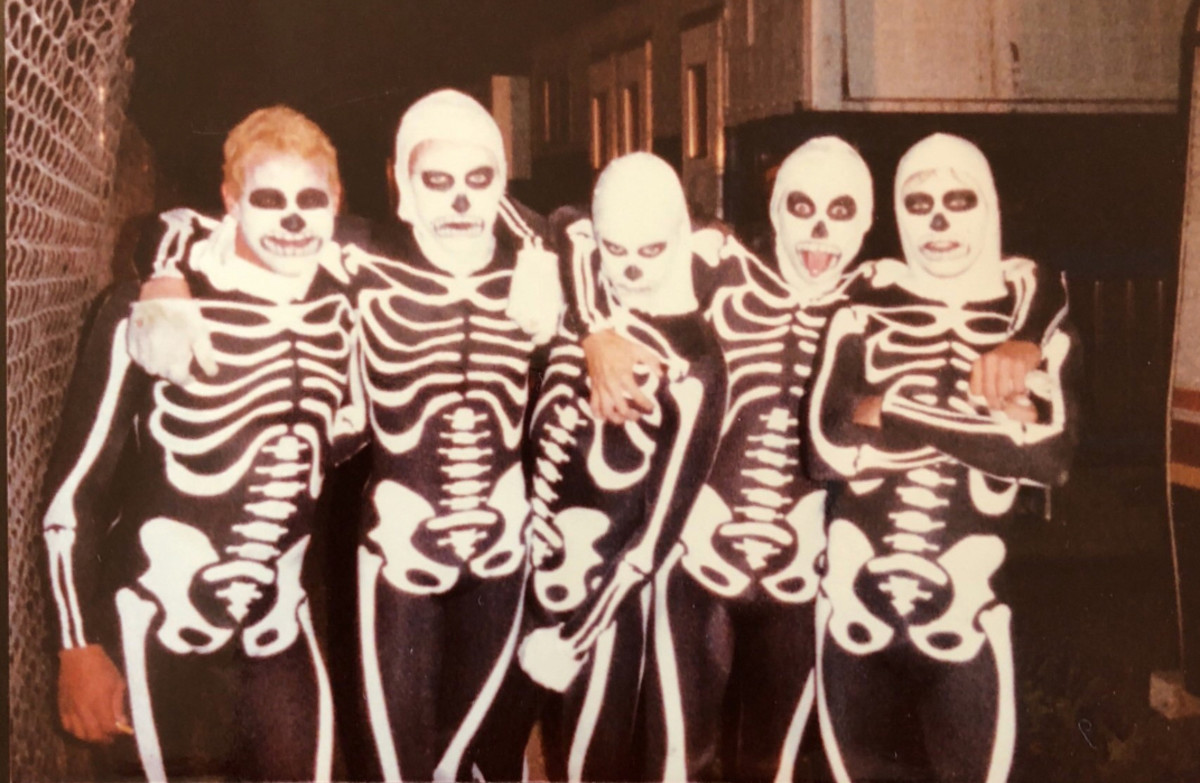
GARRISON: We were in the trailer one day and he goes, “My dad told me to do this. It makes it look nicer.”
SABUSAWA: That was one of the first physical stunt nights.
MACCHIO: It’s such a great payoff scene when they’re beating the living s--- out of this kid [after the party].
THOMAS: There were two fences, one on each end of this long field. We started running way before the first fence, then we jumped the fence and ran at least 150 yards. Multiple times. In the cold. Late at night. It was brutal. I remember sucking wind.
O’DELL: They actually had little oxygen tanks for us at the starting line.
MACCHIO: In reality, I would have been caught in about 150 feet. They were like gazelles and I was an ostrich with a broken leg.
ZABKA: He was carrying the whole movie, so he had a lot of weight on his back.
VIDAL: Ralph actually got kicked in the head that night.
MACCHIO: It was like 4 in the morning. Billy was supposed to fake a front roundhouse. . . and he just nailed me right in the jaw. You’d have thought I would’ve gotten hurt more. I was thrown all over the place.
ZABKA: He leaned into it. It wasn’t my fault.
THOMAS: That’s when they decided: We’re going to bring in stunt doubles to complete that scene.
ALY MORITA: Fumio Demura was my dad’s stunt double at the end of that scene, where Miyagi basically kicks the Cobra Kai’s asses.
THOMAS: Fumio was spectacular. He’s right up there with Bruce Lee.
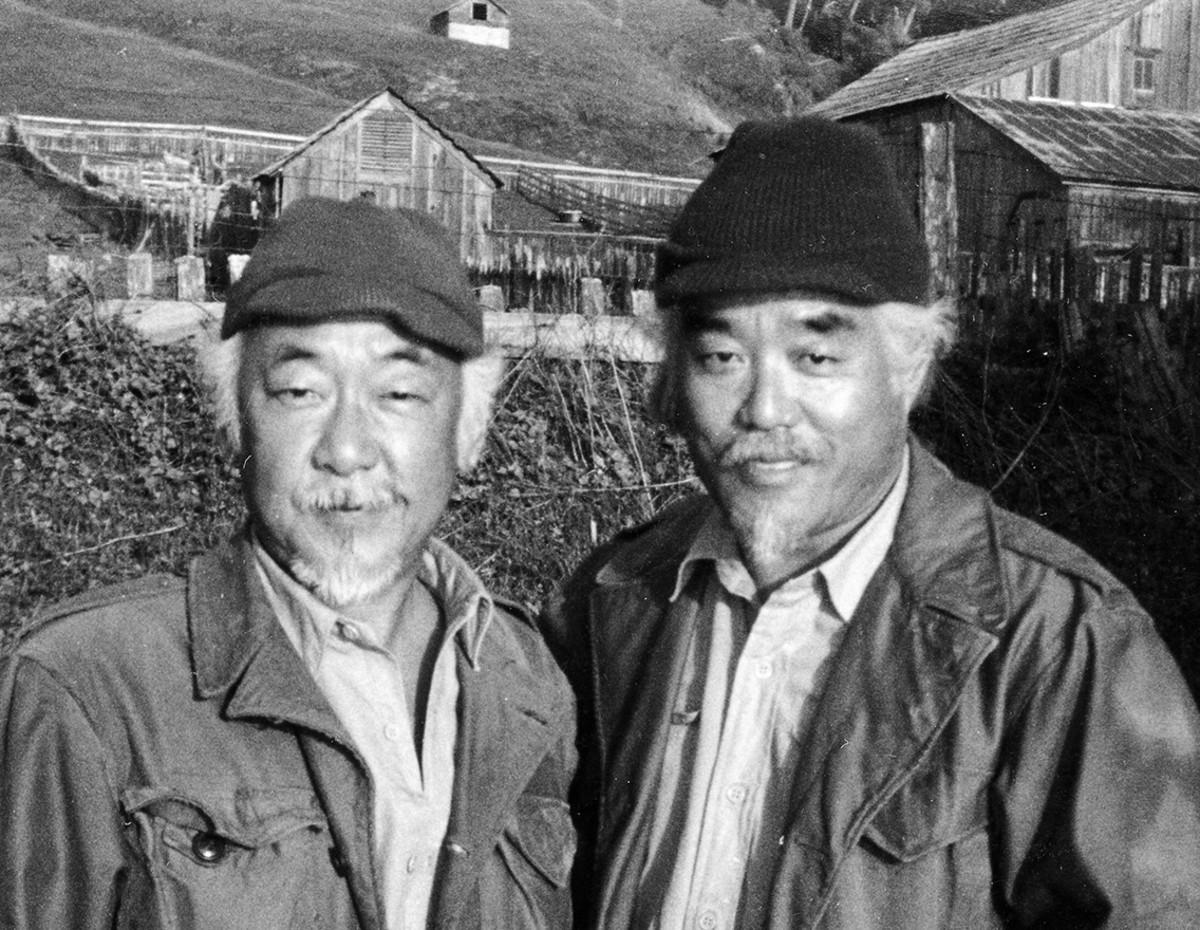
SABUSAWA: He was the real karate master. But his pants ripped when he jumped over the fence in that scene, and he was really embarrassed.
FUMIO DEMURA (stunts): I told the wardrobe guy: “I need double-knit pants.” But he doesn’t listen to me. He gets the cotton pants. I went down, the pants go Pow! Three pants split. Finally, I wear same-colored underwear.
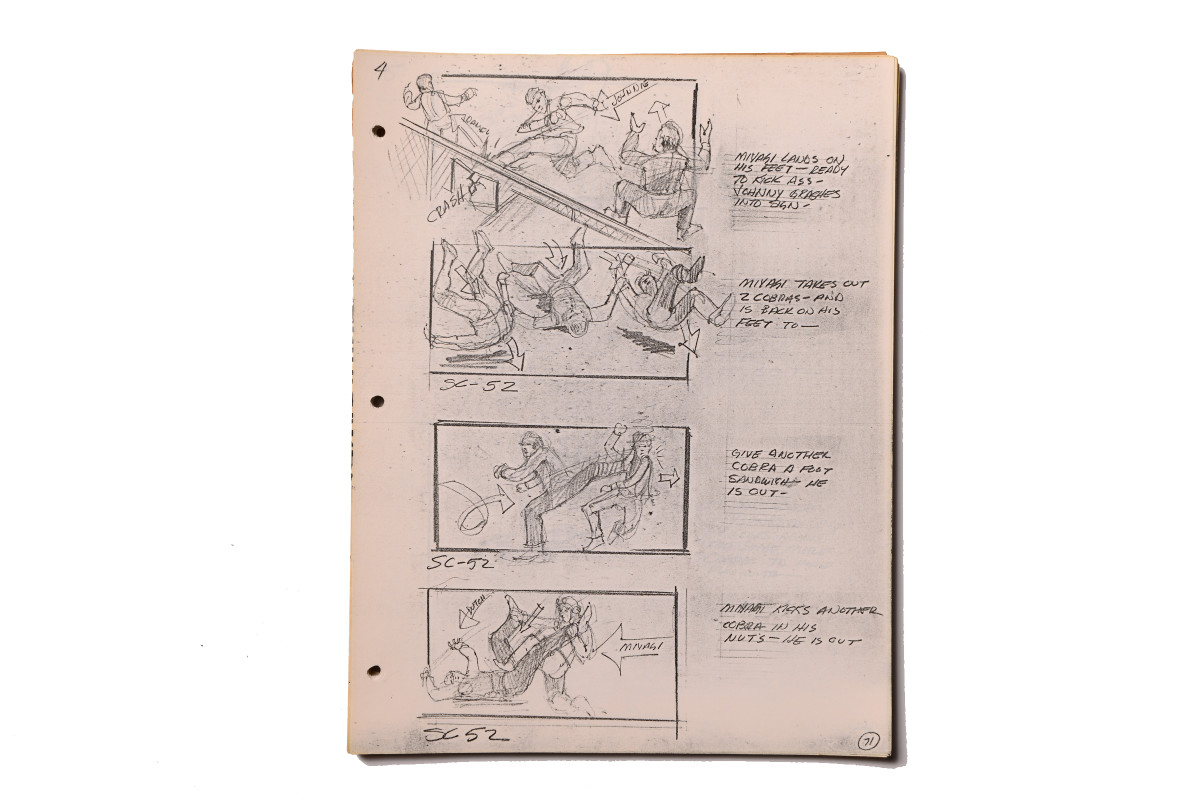
GARRISON: That was the night I got my nose broken. Demura hits Ron Thomas and me in the groin, and we bend over and he does a kick with his knees and knocks us back. He got a little too excited and slammed his knee right into my nose. I’m laying on the ground and I can feel the blood pouring out. They couldn’t use that shot because you’re not allowed to show real blood. Everyone remembers Ralph getting hurt. No one remembers me getting hurt.
LOUIS: It’s karate. Steven Seagal used to tag a lot of his stunt guys. It happens.
“Going from the Hip Nip to Happy Days to that performance is a hell of an arc.”
CHOI: What I ultimately remember about The Karate Kid was that, as a Korean-American in Hollywood who had been working among predominantly Caucasian crews and producers and directors, it was really inspiring to be on a set where one of the lead characters was Pat Morita.
SHUE: He was so lovely, such a zen presence on the set. Everybody really looked up to him.
THOMAS: We all called him Uncle Pat.
MACCHIO: He was a stand-up comedian at heart. If there was a place for him to throw in a fart joke in the middle of a Miyagi-ism during rehearsal, he’d do that all the time.
VIDAL: When we did the scene with [Miyagi doing] the crane kick on the beach pylon, I had to put on a bodysuit to look a little heavier. Then a bald wig. I came out of the makeup trailer and we walked around the set, playing twins and taking pictures.
ALY MORITA: My father had a very difficult childhood. He was born to itinerant farm workers in Sacramento in the 1930s. When he was 2, he broke his back, contracted spinal tuberculosis and spent the next nine years of his life in an infirmary, raised by white doctors and nurses.
YUKI MORITA: Then he was escorted to an internment camp, where he reunited with his family. Suddenly everyone was Japanese, and he couldn’t relate to that. . . . I didn’t have the greatest sense that this could be a legitimately good role, but Pat said, “I know this guy.” I think he saw a lot of himself, his own father, his brother, in the tragedy of that character.
ALY MORITA: That’s why his drunk scene resonates so much.
SABUSAWA: The scene that earned Pat the Academy Award nomination.
YUKI MORITA: They named the character’s wife, who had died, after me, to give some substance to his prayers.
MACCHIO: Pat knew he was in one of the first mainstream movies that ever mentioned the Japanese internment camps in the U.S. He was very specific about how the newspaper [in that scene] looked, about the Purple Heart. . . . He approached that all in a very detailed way.
SABUSAWA: That was very important to me, too. My parents were both interned. They wound up at a camp in Colorado.
KAMEN: I thought it was important that the American public remember the Japanese were interned in this country during World War II, that these Nisei kids felt so patriotic that they had their own regiment, the 442nd, and won more medals of honor than any other in World War II.
LOUIS: After that scene you had the entire crew in tears. It got applause.
KAMEN: The studio wanted me to cut that scene. I refused.
MACCHIO: Once they showed it to a full audience, everyone shut up. Could you imagine not having that scene? The whole tournament, you’re rooting for Daniel because you’re rooting for Miyagi. The baton is passed. That’s great s---.
MCQUEEN: How the f--- John saw that performance in Pat, I’ll never know. Going from the Hip Nip to Happy Days to that performance is a hell of an arc.
EKINS: Pat was paid basically nothing for that role. I want to say $30,000.
THOMAS: My favorite thing I have from that movie is this photo album Pat gave to all of us. He autographed a picture along with a note from Mr. Miyagi: “Happy holidays, you and family for whole life.”
“The crane kick? I would just bum rush you and knock you on your ass.”
CHOI: We shot the big finale karate tournament at Cal State-Northridge in a basketball stadium called the Matadome. That’s where I met my wife. She was one of the hundreds of extras filling the bleachers.
LOUIS: We needed 500 to 1,000 people in the stands, so we staged an actual tournament. It became more real.
JOHNSON: A couple hundred people participated. I told the competitors: “Don’t stop to watch what we’re filming. You’re going to win prizes, you’re going to win trophies, you’ll be able to say you were in The Karate Kid.”
ZABKA: Part of me felt like an imposter at that tournament. I wasn’t a real black belt. We were [so choreographed] in what we were doing.
VIDAL: A lot of us experienced martial artists were standing in the back chuckling about the staged karate, it looked so bad in real life.
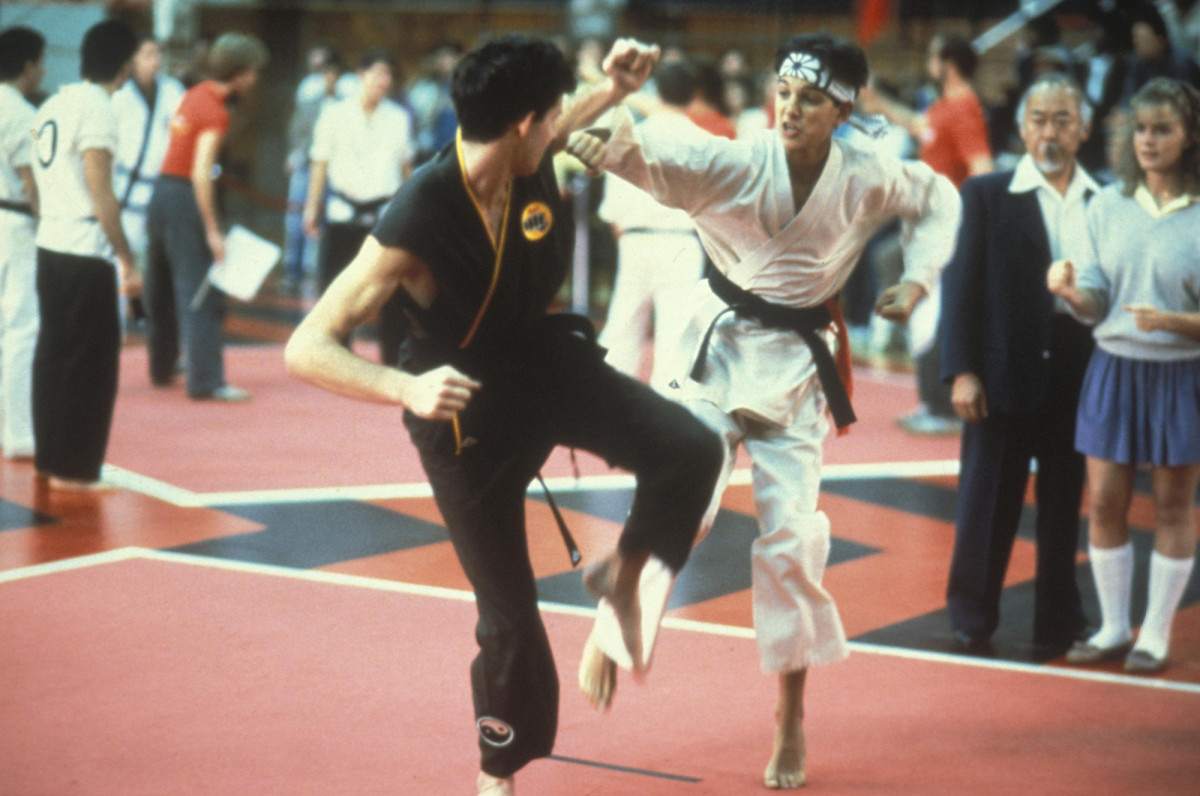
ZABKA: John Avildsen’s style was to hide the cameras. There were like nine cameras stuffed in the bleachers.
KOVE: There’s this shot when Pat comes in and we’re marching around in the tournament, then this great shot from up above—we waited like five hours while they orchestrated that. I remember telling my students, “I want you to march out like you’re Hitler youth going through a parade. Walk right past Pat and Ralph as if they’re the enemy.”
MACCHIO: The first run of the fight on camera, beginning to end with the trophy, we shot it like theater. The place was going crazy.
ZABKA: Emotion took over. I’m facing the audience between takes and they’re booing me. I see my mom sitting in the stands and she’s like, “He’s my son! He’s not a bad guy!”
THOMAS: Ralph actually hit me in the mouth with his forearm accidentally. I had a bloody lip and we kept shooting. Afterward, Ralph beelined to me: “I’m sorry, man, I’m sorry.” I’d been hit harder before.
VIDAL: There’s one scene where I’m doing these spin kicks into a heavier guy. I really kicked him. He showed me the bruise I left on his chest. That was during the montage when “You’re the Best” is playing.
JOE ESPOSITO (singer, “You’re the Best”): This seems to be my signature thing, this Karate Kid song. . . . They actually wanted that song for Rocky III. There’s a line in the song that goes, “History repeats itself, try and you’ll succeed.” In Rocky III, Mr. T beats Rocky, gets the title—but Rocky comes back and wins it at the end of the movie. But for The Karate Kid, there was no history repeating itself.
GARRISON: My famous line, I never said that while filming. I looped that in two months later. I was in the recording booth with John and he said he needed two seconds of something. I said, “Get him a body bag!” on the first try. John said, “That’s going to be a classic. You’ll never be forgotten because of that line.”
SMITH: The very last scene was the most difficult. Ralph really got into it, even though he was not physically capable of taking out the other guy.
JOHNSON: I worked with Ralph on doing the crane kick. He’d split his arms out, stand up on one leg. It’s not something that’s really legitimate or realistic.
THOMAS: It’s pretty much bogus.
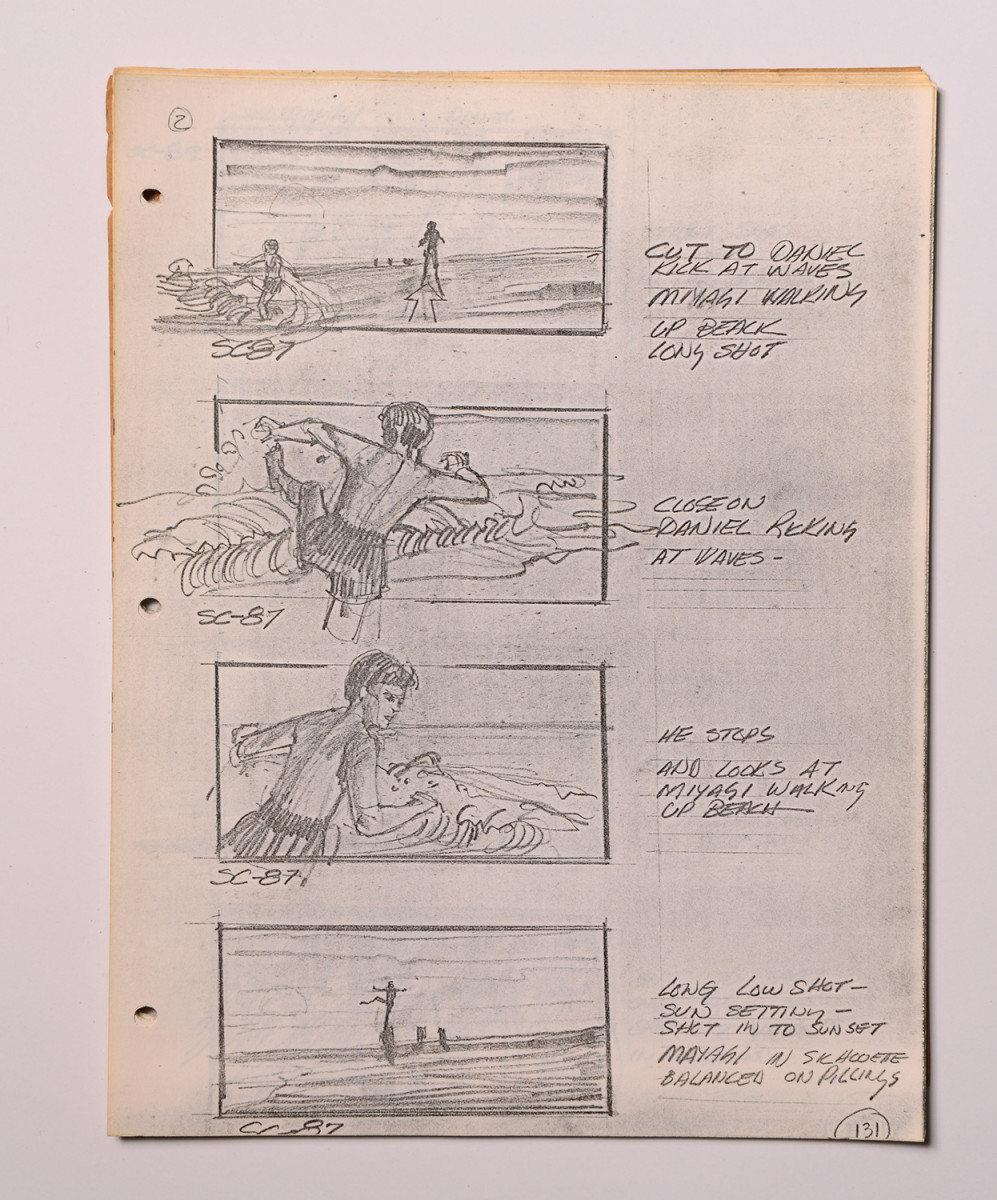
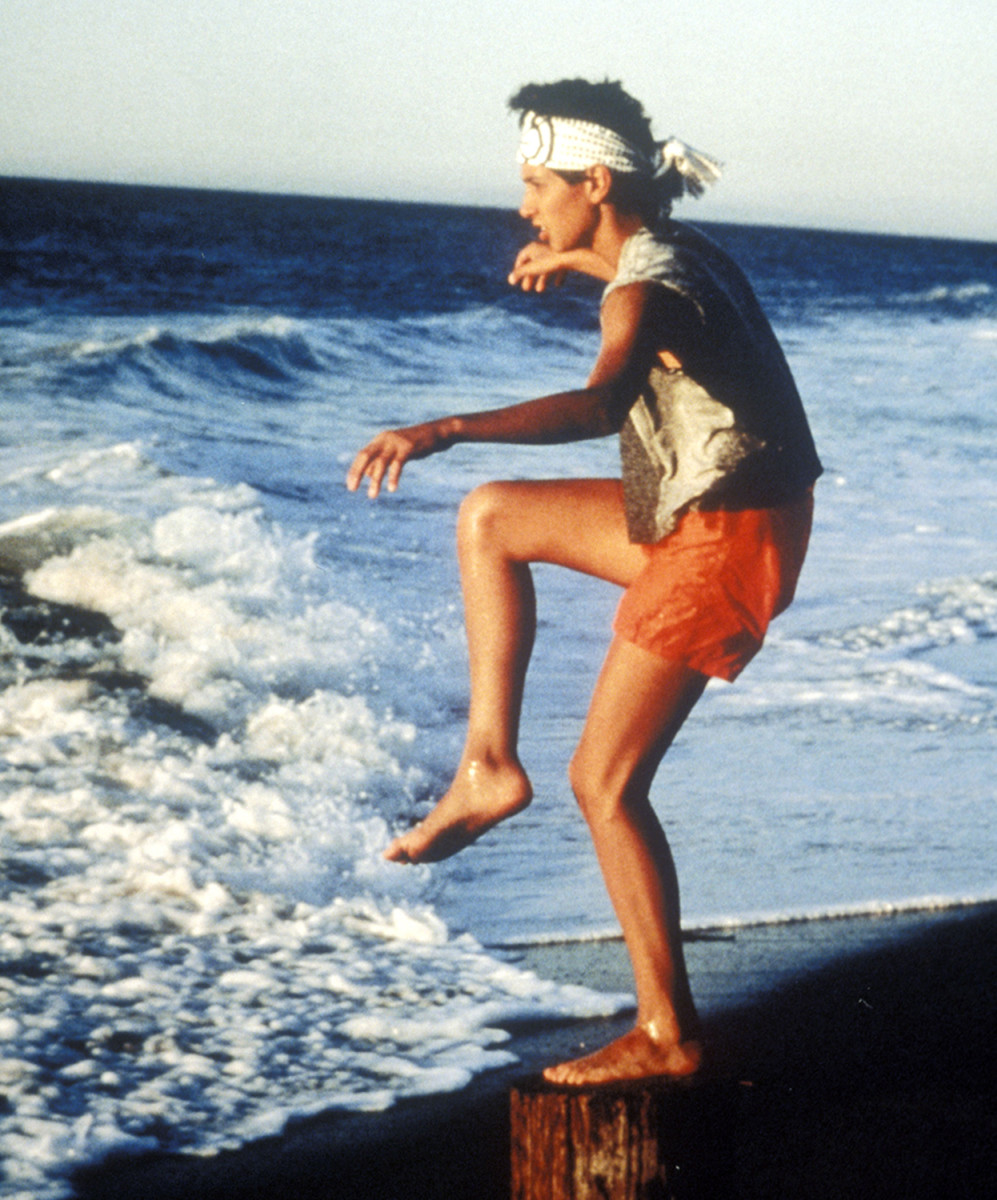
KAMEN: I made it up. It was just something I thought up on the spot. How cool would it be if you saw Mr. Miyagi on a log doing this impossible thing? You have no balance. Your hands aren’t in a defensive position. It’s just cinematic.
VIDAL: I would just bum rush you and knock you on your ass.
MACCHIO: The famous shot in that last scene is low and wide. We shot it so many different ways though. Close-ups, slow motion; I was on a ladder, shooting a leg out; over Billy’s shoulder, over my shoulder, above us. . . . I’m proud of myself for the kick, but I’m equally proud of Billy for taking the kick. Like a great passing play in football, it’s all about timing.
KAMEN: It was the Rocky moment.
THOMAS: In an actual tournament, that’s a disqualifying kick.
“This is what I’ve been trying to tell people: I’m not the bad guy!”
KAMEN: John Avildsen and I went to a test screening at the Baronet Theater on Third Avenue in New York. Afterward, we went around the corner and smoked a joint, and a cop car came by. I said, “This is the headline in tomorrow’s Daily News: WRITER AND DIRECTOR FOR THE KARATE KID ARRESTED.” Then we went into a bar and had two shots of tequila and talked about the audience reactions. The publicity people called and told us to come back outside the theater. There were guys in suits trying to do the crane kick. Right then we knew: We had something.
JUARBE: We all went to see the premiere in Westwood, on Wilshire Boulevard.
O’DELL: We sat in back and just watched the crowd react.
THOMAS: When Daniel does the crane kick to Johnny’s nose, this guy in the front row jumped up in his seat and threw his fist in the air.
COLEMAN: And guess what? The picture went out and made a million dollars overnight, and I fell off the f------ bridge.
LOUIS: It opened to $5 million. The next week another $5 million, and the week after that another $5 million. And that’s back in the days of a $3.50 ticket. It caught everybody by surprise. . . . Of course, now there’ve been five of these movies.
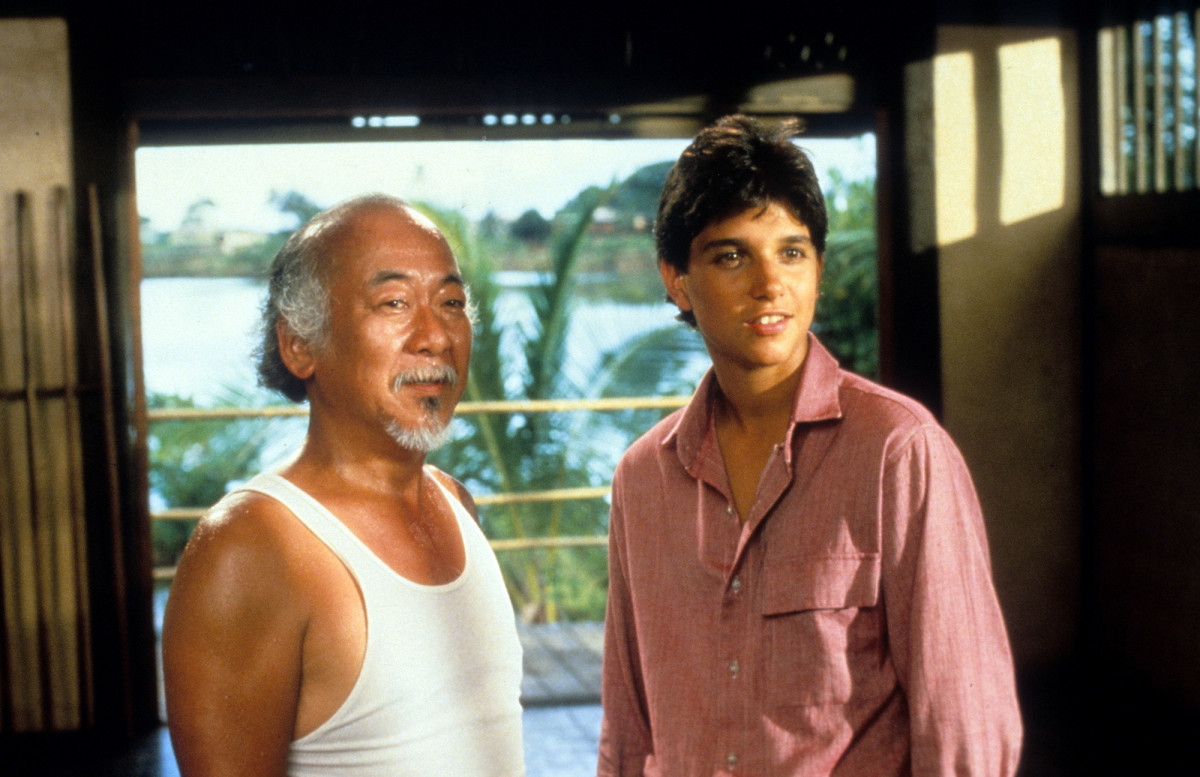
KAMEN: They immediately wanted a sequel. I used it as an excuse to go to Okinawa and see my teacher. I spent a bunch of time hanging out and training. The people there were very, very excited about The Karate Kid, because no one ever talked about Okinawan karate, really.
MATTHEWS: Jerry [Weintraub] was friends with George H.W. Bush, so he invited him to the set of The Karate Kid Part II. At the last minute we had to make a helicopter pad so his Black Hawk could land for the afternoon.
KAMEN: For the third one, I wanted to make a Hong Kong flying-people movie. I wanted to take them to 16th-century China with a girl in a fever dream who wakes up in a boat going through the South China Sea. She’s with Mr. Miyagi and they come to this village and they get into a flying kung fu battle.
MACCHIO: Part three is not my favorite movie. All they did was make the first one over again, without any of the good stuff.
YUKI MORITA: As sequels came, I saw the deterioration in characterization. And in Pat himself. Things started to fall away. Our marriage was destroyed by it all. Everybody would mimic him—a karate kick or a Miyagi sensei thing. It became cult-like. It hurt him. It was a burden.
EKINS: . . . there’s a script to make another one.
KAMEN: A Broadway producer asked me to co-write the book for Karate Kid: The Musical. I want to have choreography for the Cobra Kai. People are going to burst into song.
GARRISON: It’s still part of the culture 35 years later. There’s seldom a day when someone doesn’t say to me, “Put him in a body bag!” And I say back, “It’s: Get him a body bag!”
LOUIS: There’s a dojo at the El Camino Shopping Center, a mile away from where I lived, called Karate Kids.
JOHNSON: Every single parent in the whole country wanted their children to protect themselves against bullies, so karate studios were signing people up right and left.
KAMEN: I got calls from people who had dojos who said their attendance doubled. People came in and said, “We want to learn ‘Mr. Miyagi karate.’ ” What the f--- is that?
MCQUEEN: That’s the big positive: That movie probably saved a lot of ass whoopings.
ZABKA: I carried on training [with Pat Johnson] a little longer after the film. I was a marked man sparring in class. The black belts wanted to knock Johnny out.
KOVE: I would walk down the street and guys would be screaming out of cars, “No mercy!” My son owns a vape store now, and there’s a vape juice called Sweep the Leg made by Banzai Vapors. I’ve got a beer from [Infamous Brewing Company in] Austin called Sweep the Leg. It’s a peanut butter stout. It’s heavy.
KAMEN: There’s a car wax called Miyagi’s Wax On Wax Off.
VIDAL: I saw a Pop-Tarts wrapper once with a drawing on the wrapper of a pastry doing the crane kick.
ZABKA: In 2006 this label approached me with a new band they had, No More Kings, that had written a song called “Sweep the Leg.” They asked if I wanted to be in the video. The only way I’d do it was if I could write and direct and get everybody back. They said, “That sounds great.”
PETE MITCHELL (No More Kings singer-songwriter): I ended up studying jujitsu because of that movie. The song is basically an apology from Johnny to Daniel saying, “It wasn’t my fault.” In the video, he’s been hanging onto this and he gets a chance to make it right.
ZABKA: I had been trying to outrun the shadow [of that movie] in a way. I wanted to do something new. The music video was the first time I [embraced the nostalgia].
MITCHELL: He was like, This is what I’ve been trying to tell people: I’m not the bad guy!
MACCHIO: Justice for Johnny. It’s the How I Met Your Mother theory. On that show, Barney Stinson [one of the main characters] says Johnny is the real Karate Kid.
CHRIS HARRIS (writer-producer, How I Met Your Mother): Like most of the writers on that show, I grew up in the ’80s. The Karate Kid was our Rocky. We had a lot of celebrities appear on the show, but there was never a longer line for autographs among the cast and crew than there was for that episode when we had Ralph and Billy on. One executive who watched it said she teared up a little when Barney finally got his wish, the Karate Kid villain showing up at his bachelor party.
HELLER: When people hear I was in that movie—especially men in their 40s—they just light up.
ZABKA: The creators of the Cobra Kai series (which debuts May 2 on YouTube Red), I think they were between 8 and 10 when the movie came out. It’s fan fiction in a way. They had a lot of fun filling in the blanks over the last 30 years.
HARALD ZWART (director, The Karate Kid, a 2010 remake with Jaden Smith and Jackie Chan): It’s a very relatable story for young people. The idea that you can actually face and defeat your bully is big.
MACCHIO: Daniel LaRusso was a 98-pound weakling with East Coast swagger. And yet he was very much every 15- or 16-year-old fatherless kid looking for guidance.
KAMEN: We all want the perfect teacher, the perfect mentor. Someone to give you the secret, the knowledge.
MACCHIO: Yes, you have them catching flies with chopsticks, you have the crane kick. . . . But I think the human element is why it connects and relates.
THOMAS: It’s not a martial arts movie, it’s not a movie about karate at all, really. It’s about a fish out of water and this relationship and this magic that these two characters create.
